***this page is always in progress***
thanks for taking a peek
June 17, 2025
[giants among us]
Between meetings today I stopped in to see my mother. If you know me, you’ll know my mom is 88 and in a stage of dementia where she is someone slightly different each time I see her. She recognized me today. We went for a walk. It was hot – finally summer. We passed Bakerbots and couldn’t NOT go in for ice cream. She got mint chocolate. I got pink lemonade. Her wide eyes gave it away - she was loving it, eating it slowly, the way you do when you are a kid eating your first ice cream and discovering the taste and feel of sweet cool loveliness.
At different stages in life, we are not so different.
(I also enjoyed my ice cream, though not as slowly, and fully aware of what I was getting and what to expect. I expected to love it.)
I’ve been reflecting on expectation in other ways - how institutions are perceived, how arts organizations find a niche and become the furniture of the art form, solid and always there. Until they are not. Like the artists and leaders that build them, these entities are complex, fragile and temporary; they exist not only because of the people who keep them afloat now but because in a critical moment in the past, people and circumstance conspired to allow something to grow. Those people listened to their instinct, impulse, dreams.
Sometimes I forget that it wasn’t easy for them, that imagining the past doesn’t mean imagining an easier time. It was never easier; the challenges were only different.
Before there were ever buildings for dance or companies or stages, there were people who loved moving, for whom thinking through the moving body was the way to experience the world, where community was felt through collective energy, moving energy – dancing. Yes, there were people who paved the way, and who pave the way today – all in relation to each other, consciously or not. But it is not simply a continuum. It is not simply about lineage either. It is about holding each other up, realizing this is all temporary, but it is also - our lives.
I had the privilege of sitting down with Peggy Baker in conversation last week in the building where I started to understand the relation between dance and spirit, where I started a path that I am still on. Now I am in that building with more regularity, thinking about the future, bridging generations, questioning responsibility, and building relationships, spirit and creative forces. If you have time, here is a short clip from that interview, words of the inimitable Peggy Baker.
(A slowly enjoyed ice cream cone is a good chaser.)
*the photo below is a self-portrait taken in Rio de Janiero on tour with between me and you, November 2024
***
May1, 2025
[what is choreography?]
There has been a lag in updating the insider page. I apologize mostly to myself for that, but also to you. I'd like to say I took a break but to be honest, responsibilities swept me up-up-and-away the last little while. I'm back now sharing a brainstorm/skeleton of a short workshop I am giving next week on a shared DanceWorks program with the incredible Natasha Powell of Holla Jazz. We each have 45 minutes to share what choreography is (to us). Sounds like it could be a bit like a game show, doesn't it?
[always in draft]
What is choreography?
being in the world / moving through a world
being in the world / moving through a world
built on
Perspective we have
(from where we are – distance / proximity)
(from experience – observer / participant)
Relationships
(with architecture / object: what are you touching?)
(with people / what connects us?)
(with self / what, when, who do we let ourselves trust?)
A practice
of creating and letting go
(roles, activity, interactions, relationships – leading / following)
A conversation
between:
past & future
the accumulated and emergent
known and unknown
that is simultaneously evolving and temporary
(like life)
Perspective we have
(from where we are – distance / proximity)
(from experience – observer / participant)
Relationships
(with architecture / object: what are you touching?)
(with people / what connects us?)
(with self / what, when, who do we let ourselves trust?)
A practice
of creating and letting go
(roles, activity, interactions, relationships – leading / following)
A conversation
between:
past & future
the accumulated and emergent
known and unknown
that is simultaneously evolving and temporary
(like life)
*the photo below was taken in Rio de Janiero while on tour with between me and you, November 2024
***
November 21, 2024
[people first]
Back from touring between me and you to beautiful places where the dominant culture is not mine, places of generosity and welcome, where you walk into a room and drop your things to hug everyone before the day begins. And where you do this whether you understand each other fully, are already friends or complete strangers. The work starts after.
People first.
In each city we had an angel who helped us navigate the city, find meals and solve production issues: Valentina and Nathy. Gentle folks worked with me as I navigated Spanish and Portuguese: Maria and Anna Julia (thank you for your patience). All this made it possible to really connect with the beautiful and much larger audiences for this work than we ever had in Toronto or Montreal. It was a delicately beautiful thing to find the response that we did for this work in Argentina and Brasil. And I know it is Deby Staiff is to thank for the seed that grew into this branching opportunity.
There were great people on the inside too: Rebecca meeting all the challenges and redoing everything time and again; Jeremy caring for all the details even with a persistent stomach bug; Duncan and Tavia spraying Epson salt and beer on the theatre’s window, and Adrian who happened to be available for a call in a moment of need.
Coming home after the news of the Fleck closure and many other shifting realities in the Toronto scene, I am holding onto the principle of starting with the people. It’s people who make anything happen, and together, who can make great things happen.
We are so grateful to all those below (and also to many people not pictured).
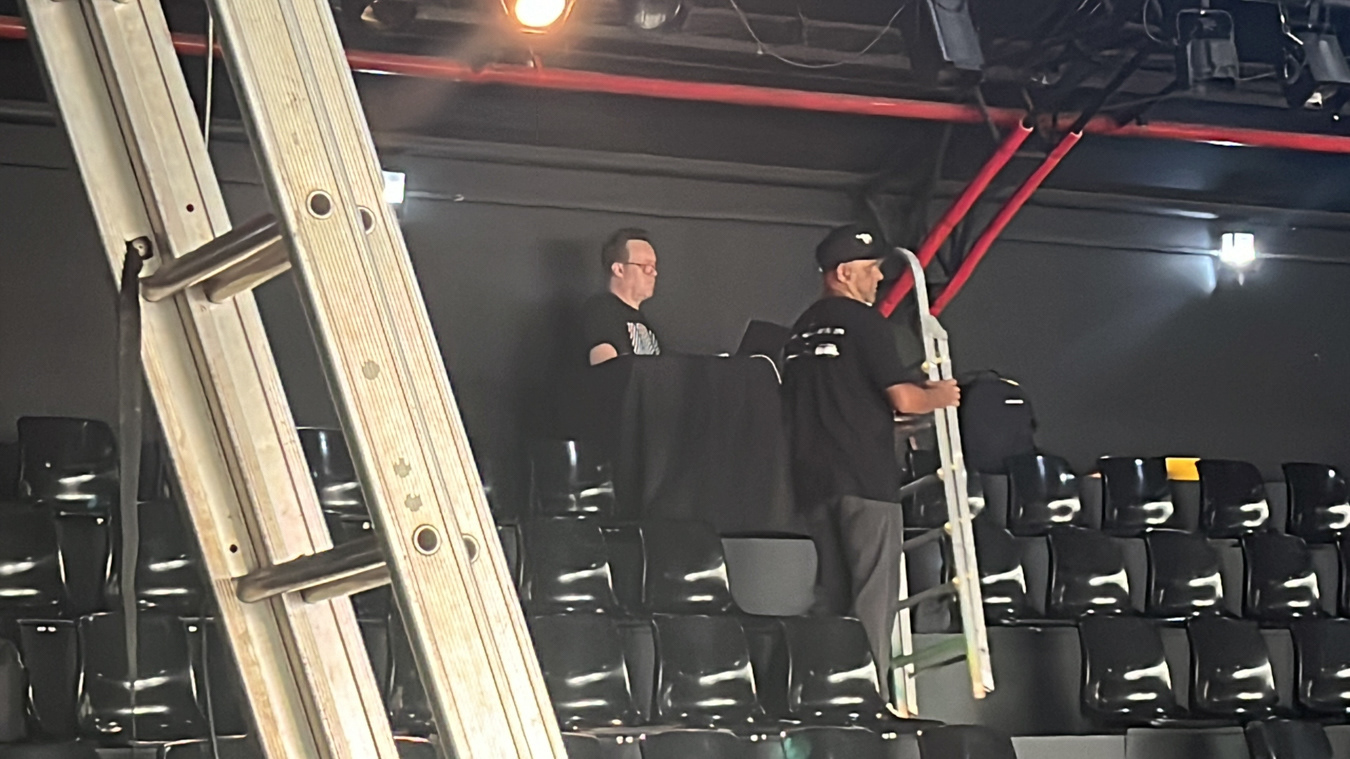
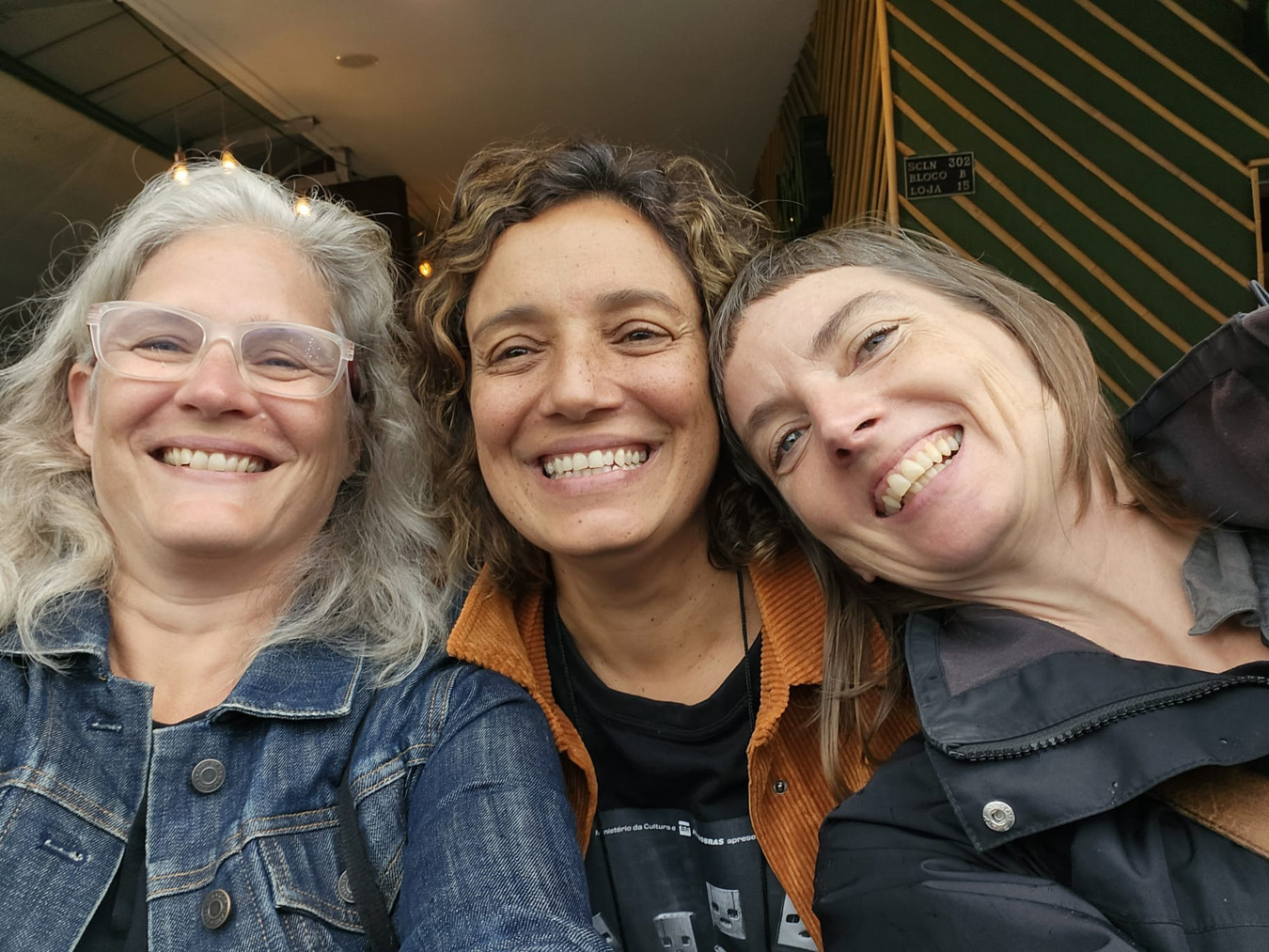
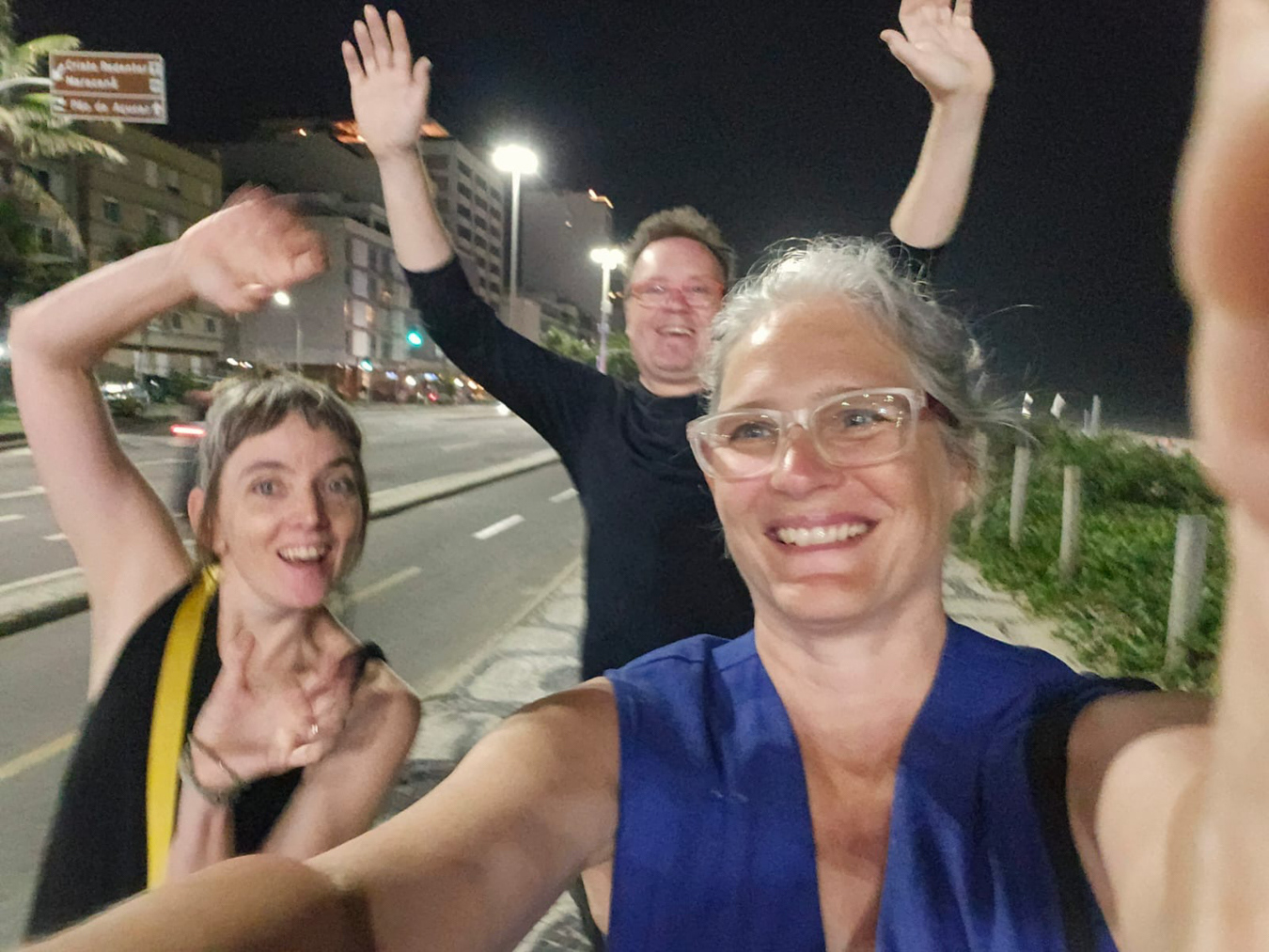
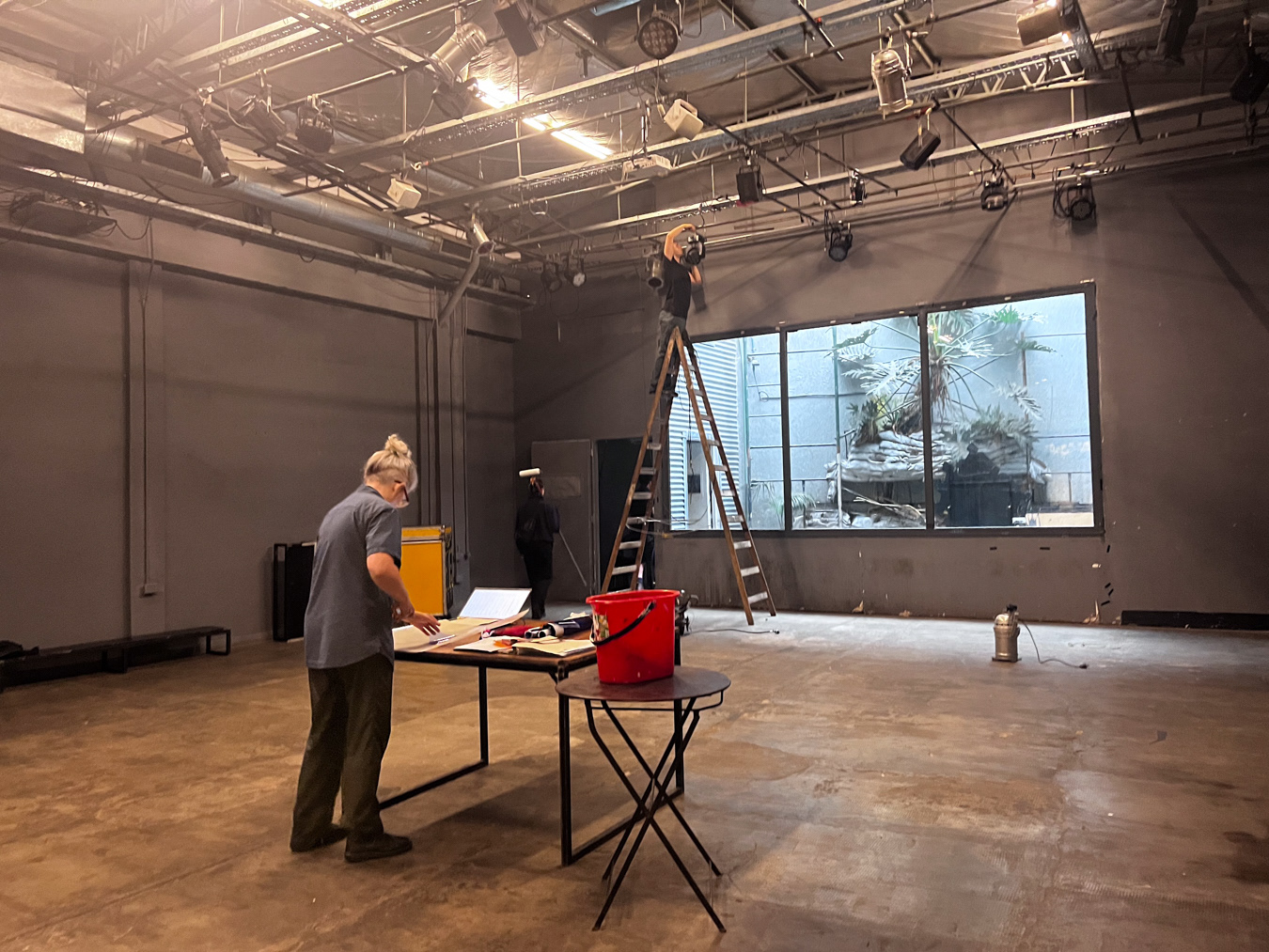
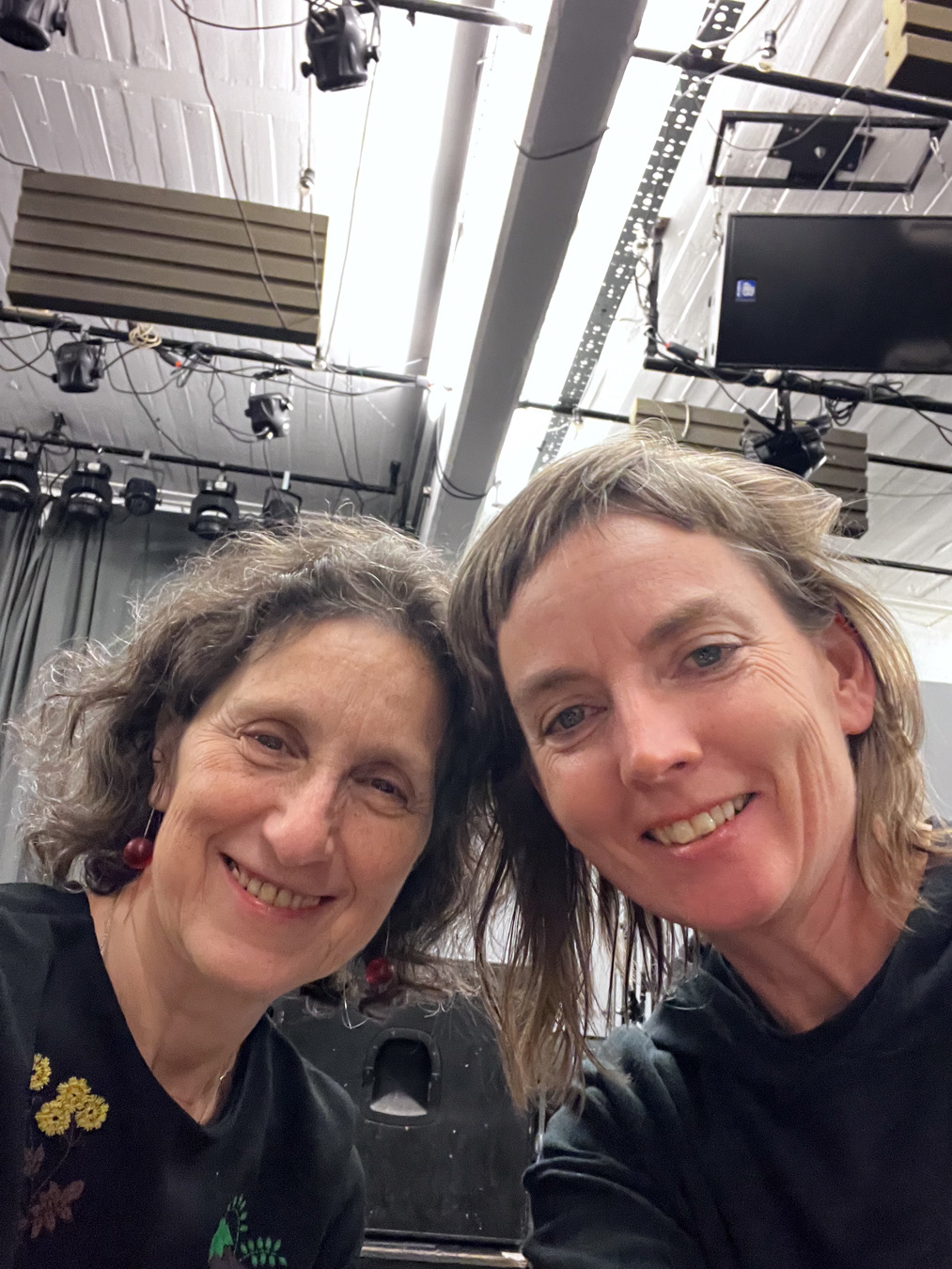
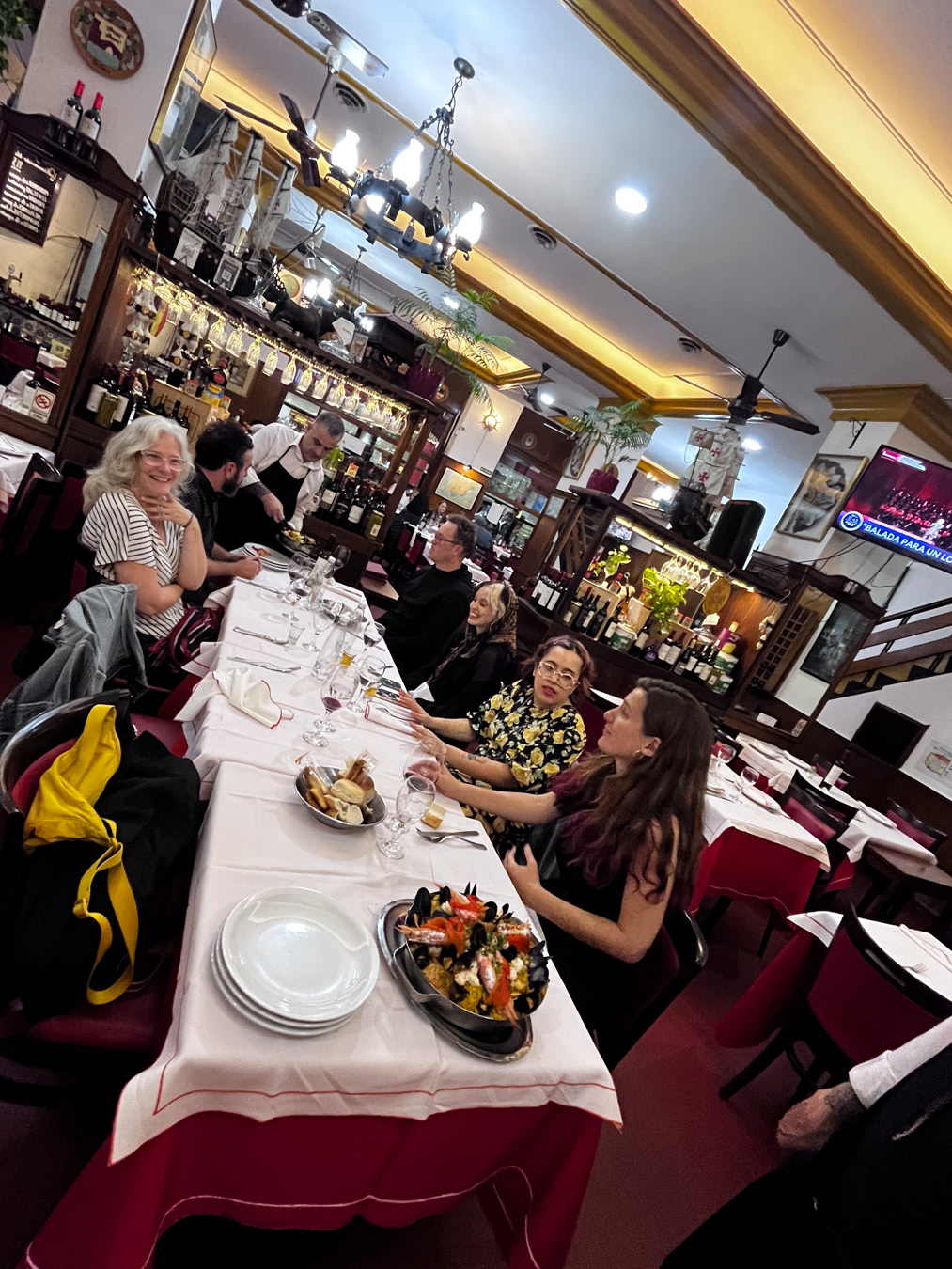
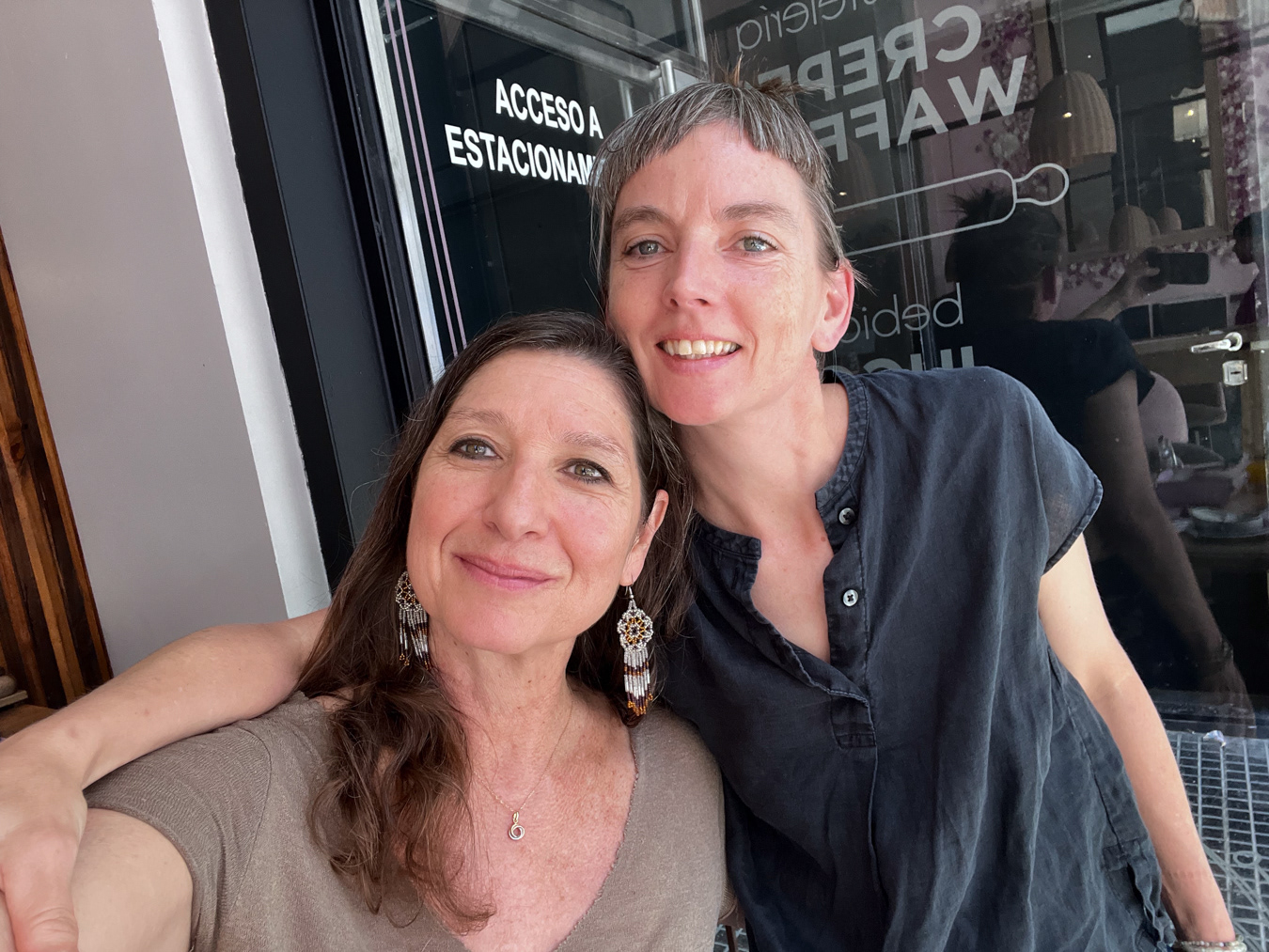
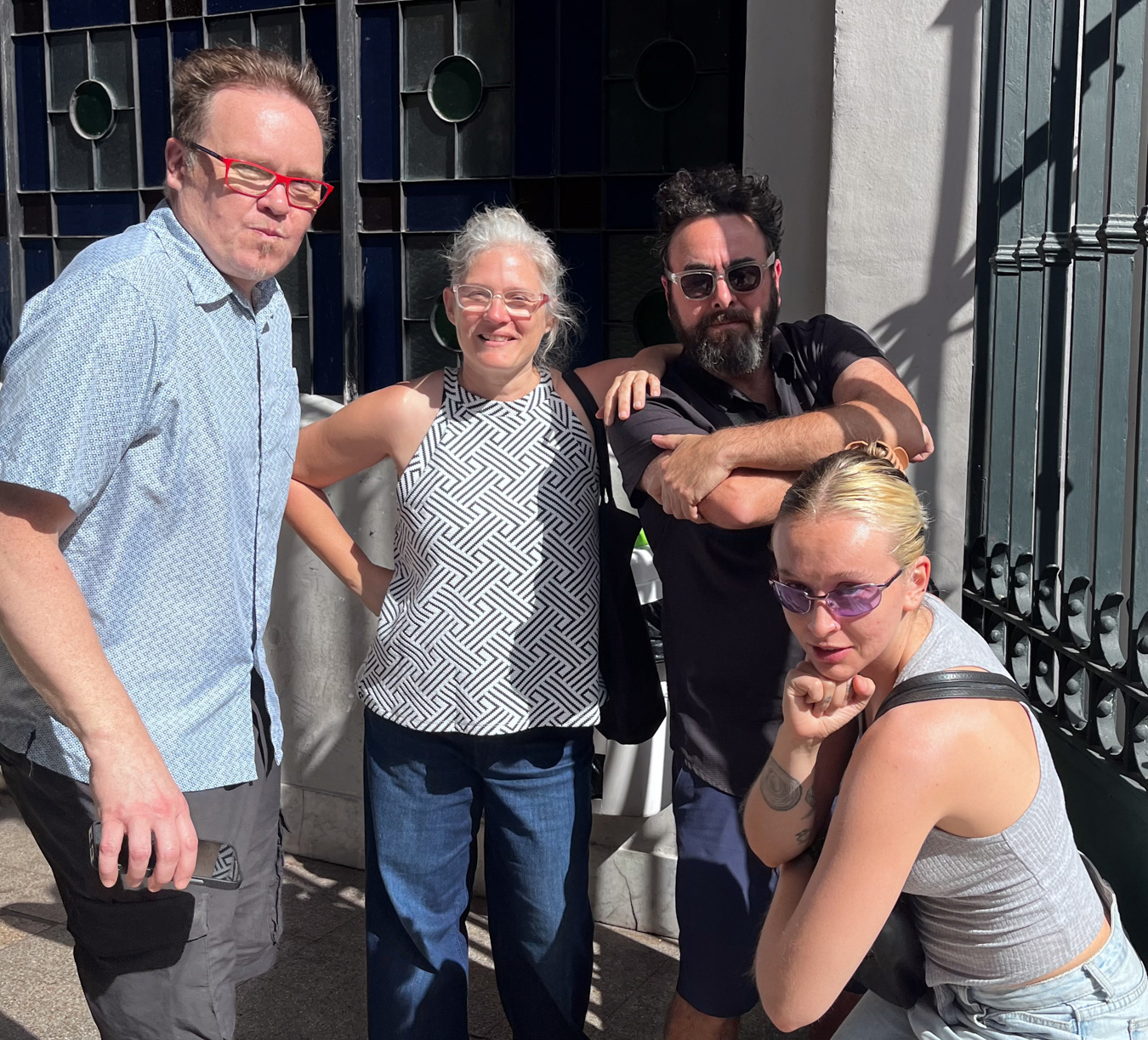
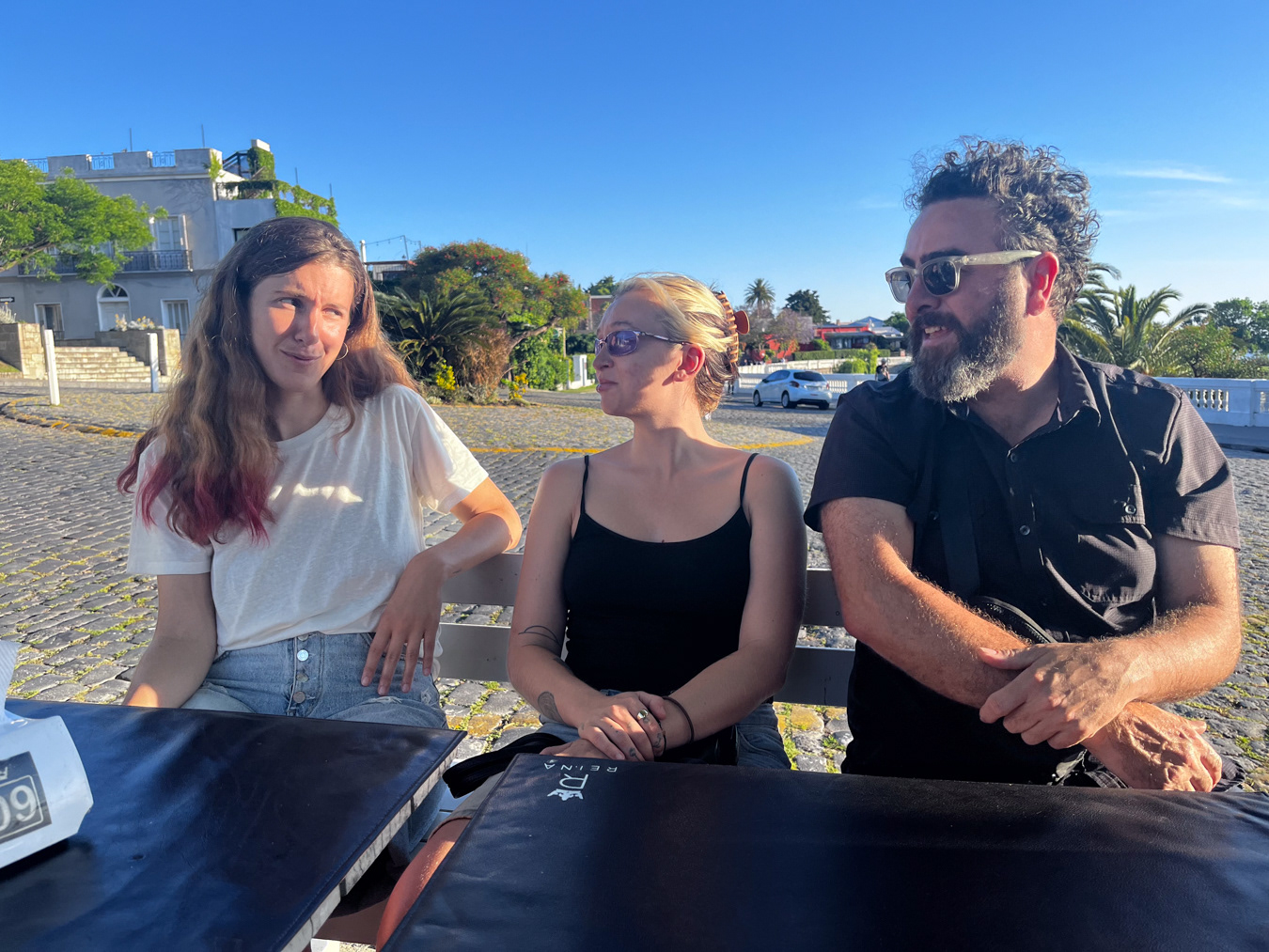
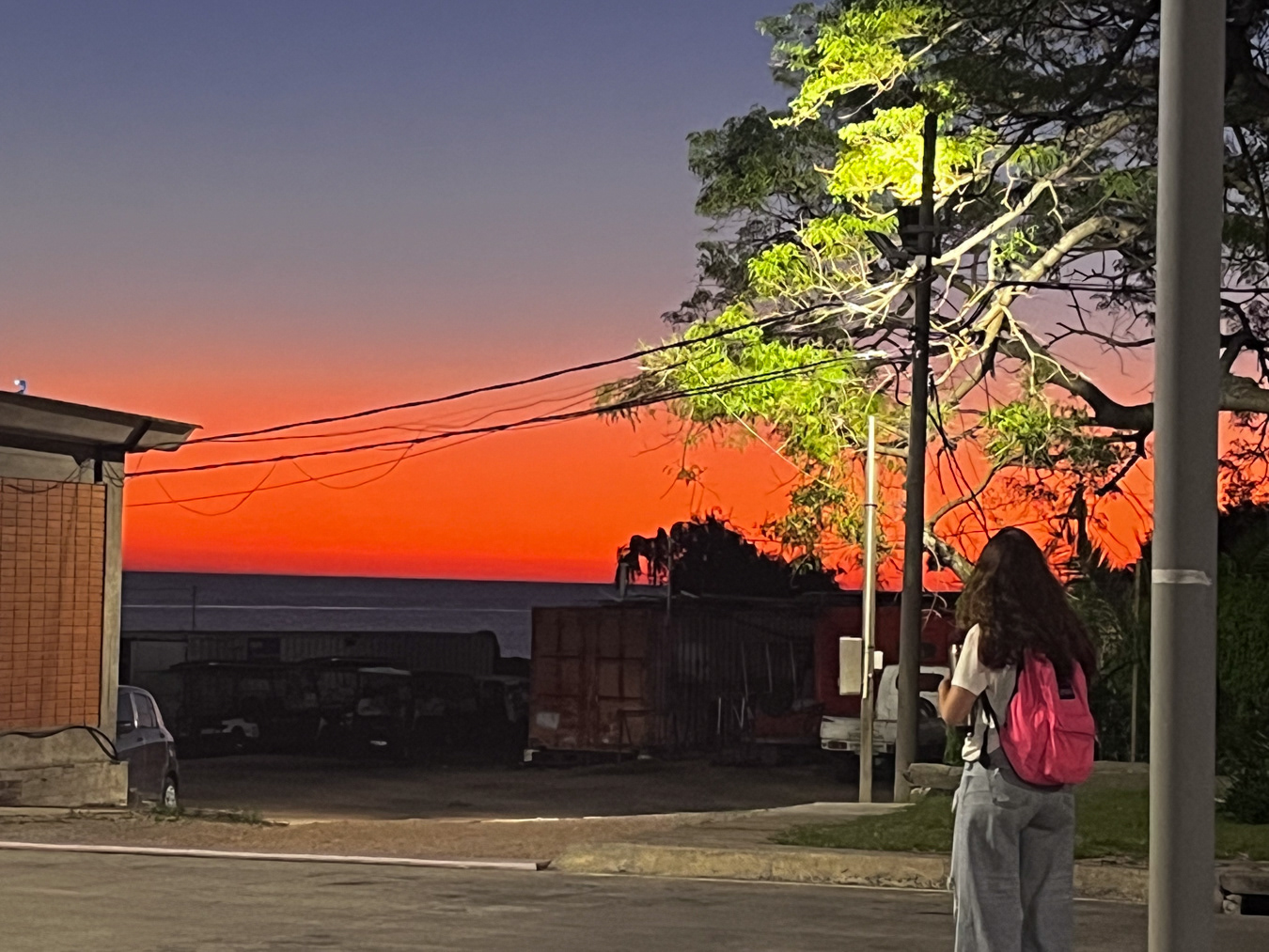

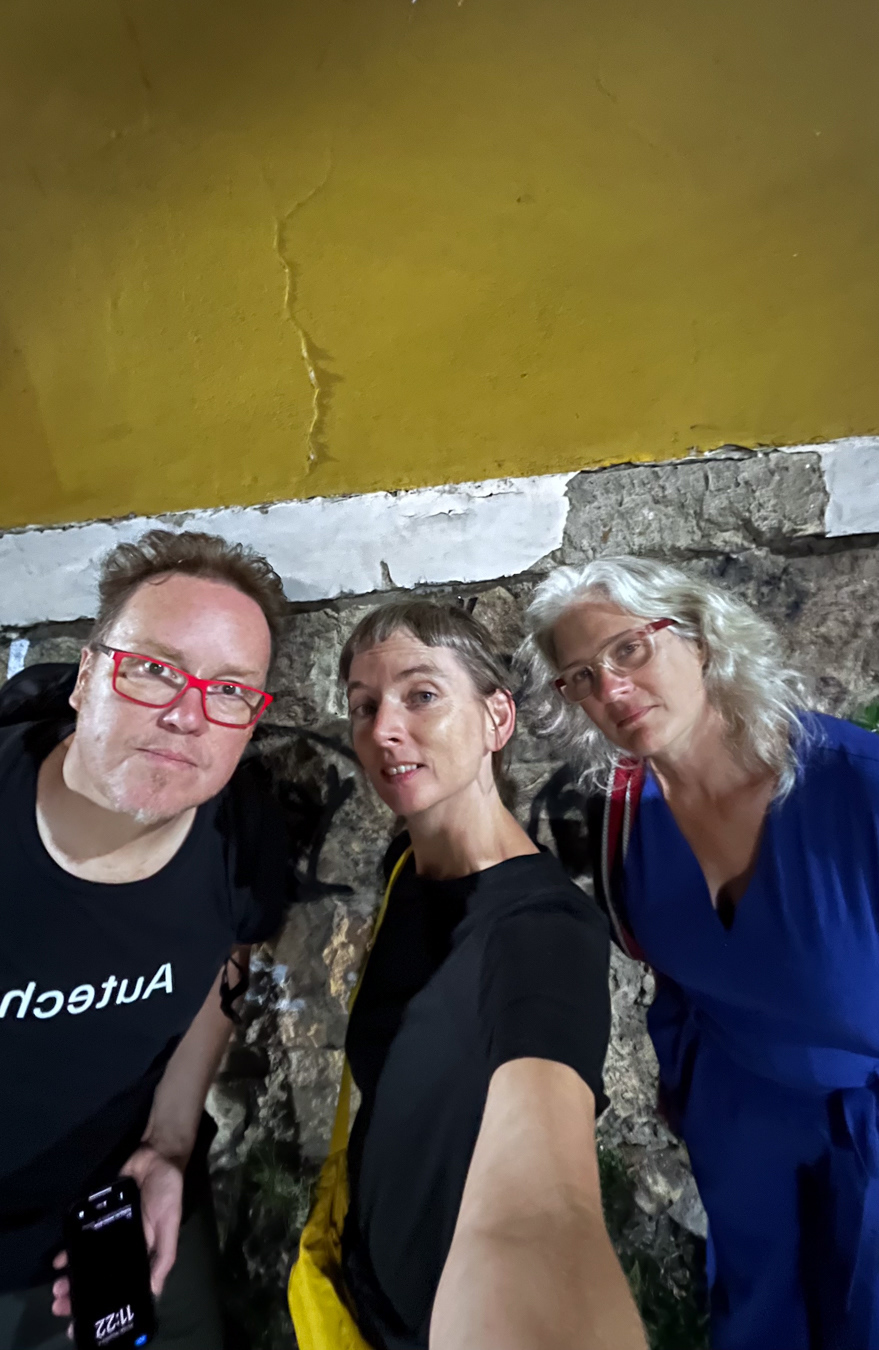
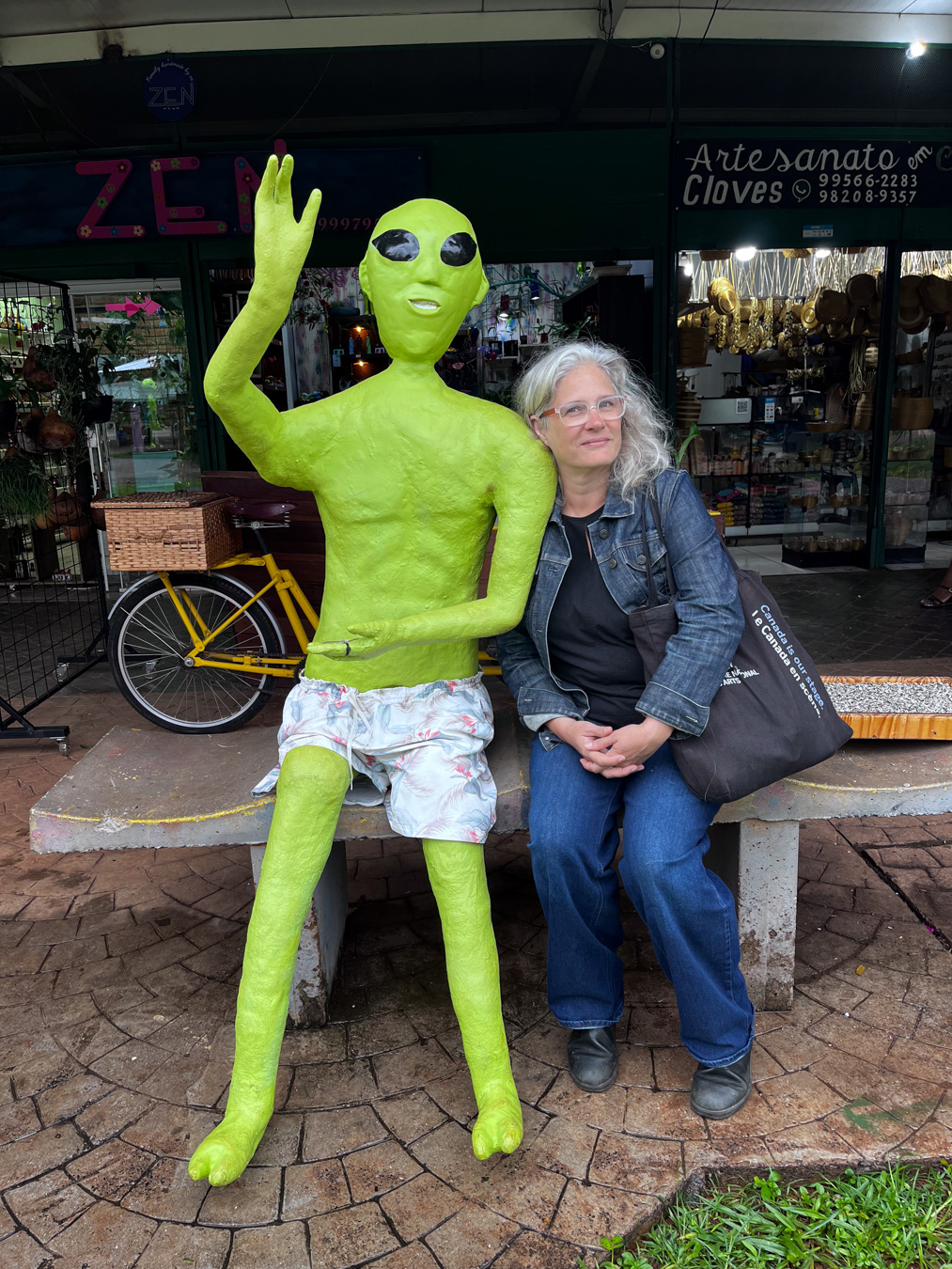
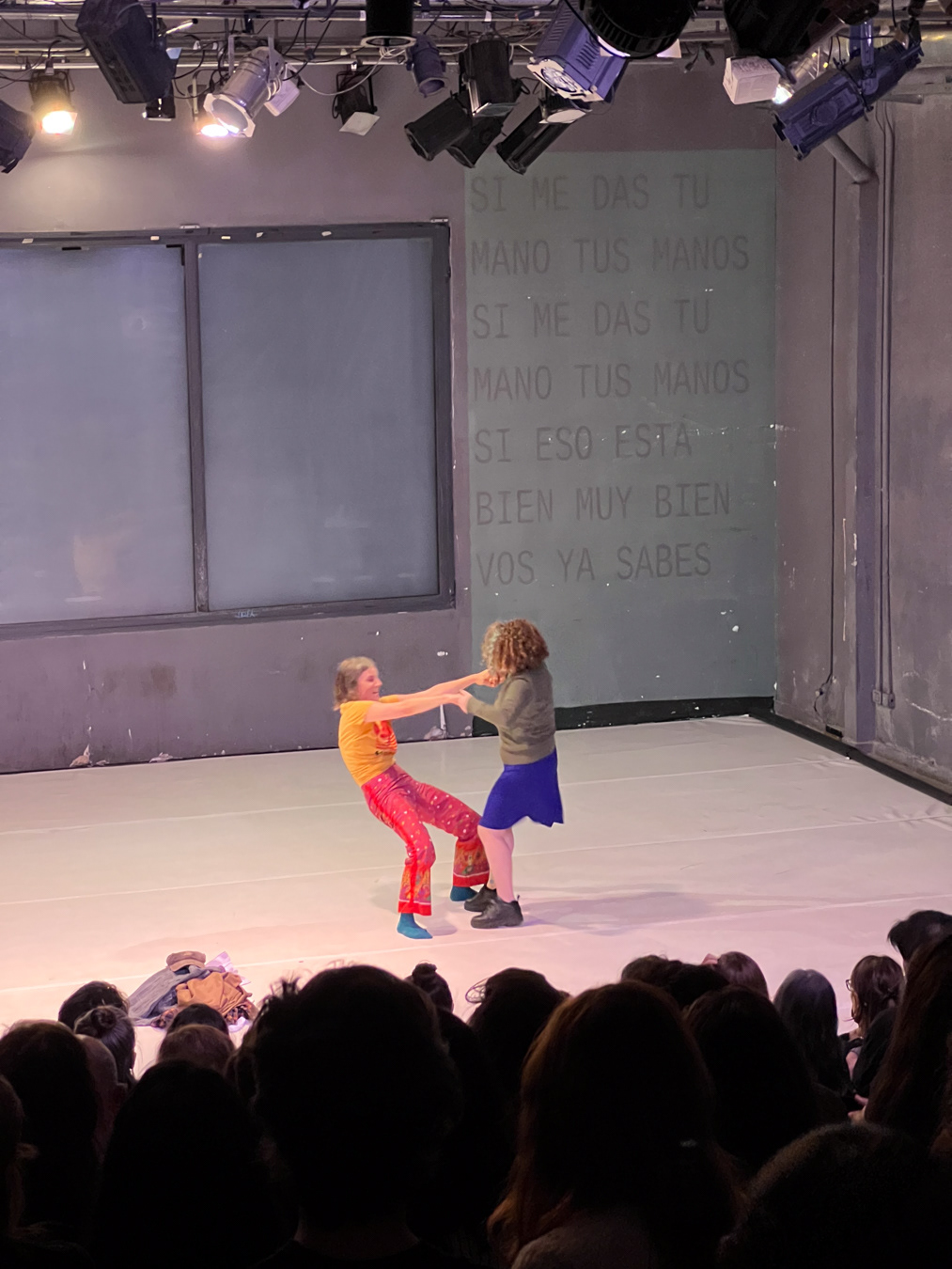
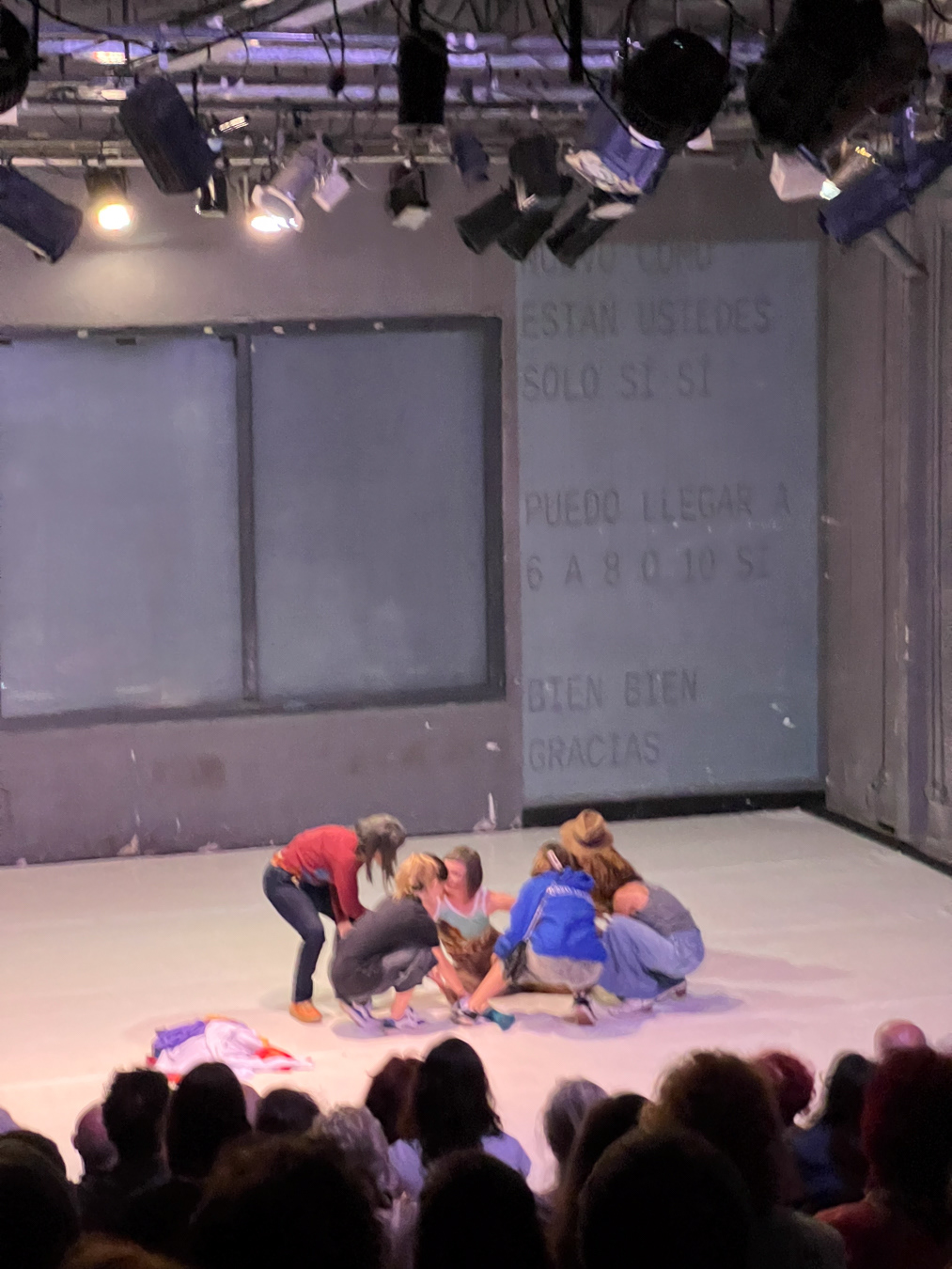
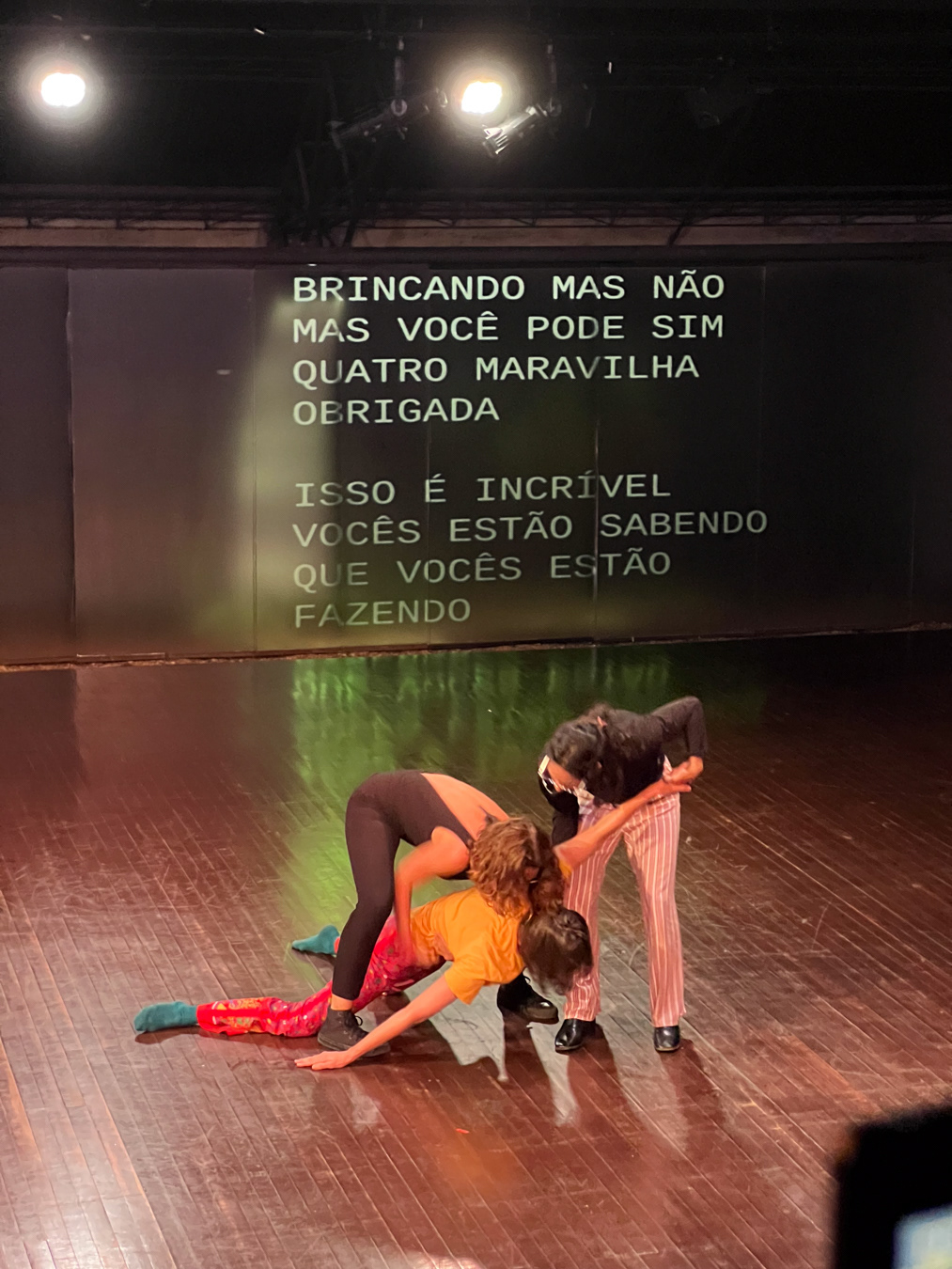
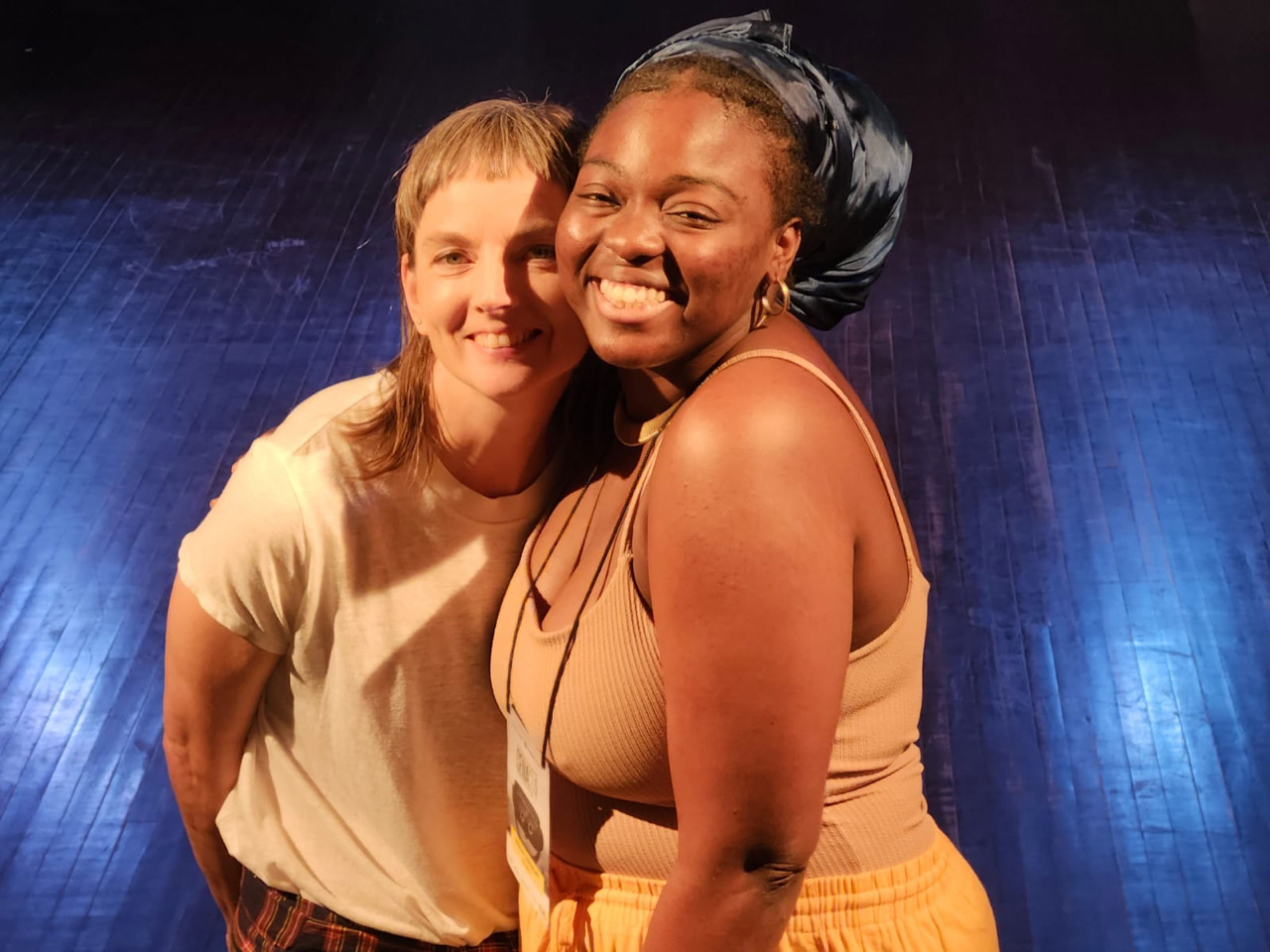
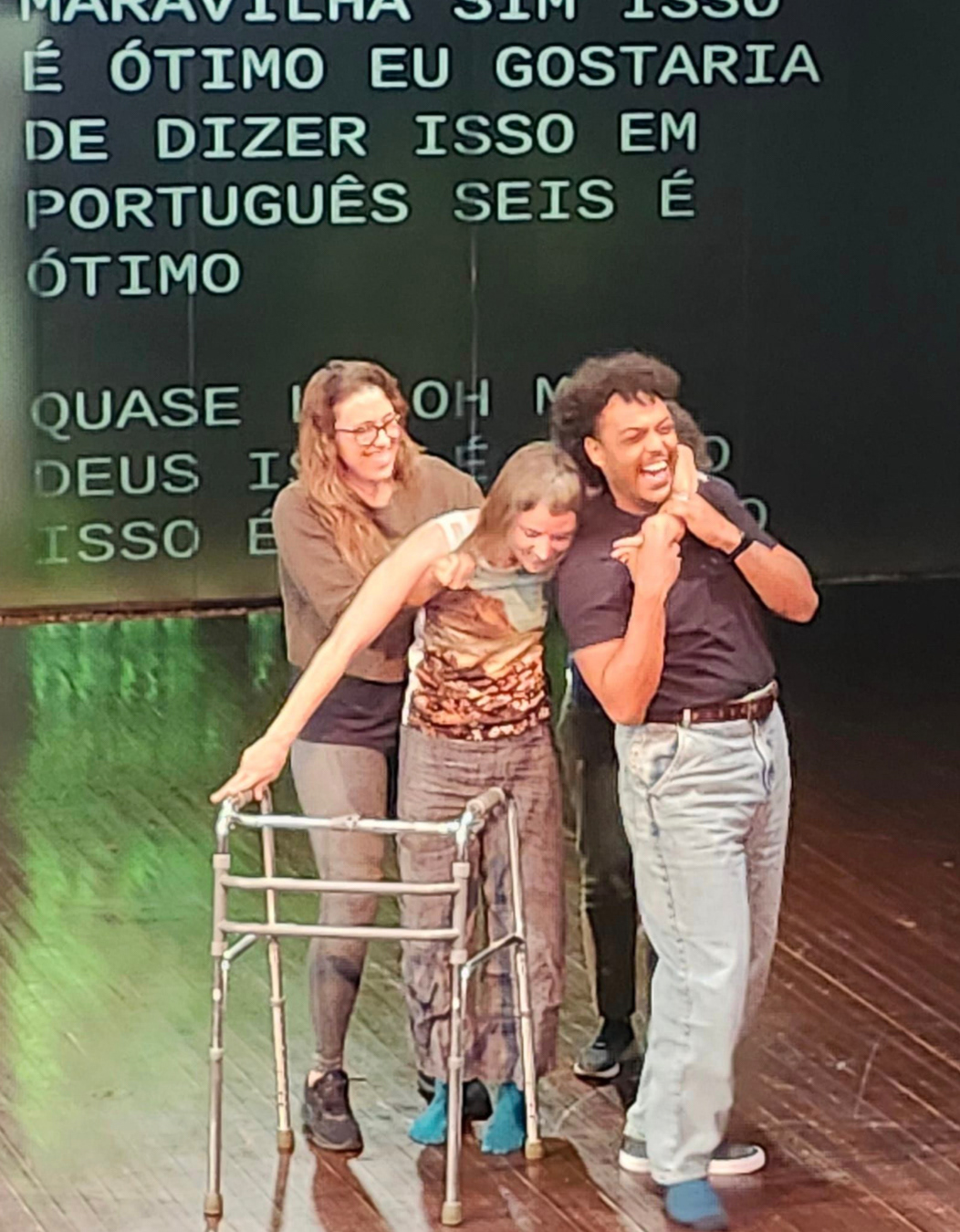
***
Sept 17, 2024
[bathroom walls]
A few months ago a friend who was working at the Toronto Arts Foundation sent me an image that had been up in the men’s bathroom for - well - I’m not sure how long. I’ve been to the TAC only once in my life and never used the bathroom on site - men’s or women’s.
The random mid-day send as I was at my desk working through the always-long-list of admin was strangely tender; a reminder to listen, and listen to yourself. That reminder seems to never get old.
This friend was a dancer whom I met while choreographing my first commissioned work at TMU (then Ryerson). I was new; as a young choreographer I was offered the opportunity to make a work on a small number of dancers. Shawn Newman was one of them. v-hold was the work. The cast was special. It was a special time with lots of learning for me too. v-hold was taken into the repertoire of a short-lived company that CCDT ran called TILT which gave recently graduated dancers work, professional development, and chances to perform. They toured a lot.
Shawn went on to earn a PhD in Cultural Studies at Queen’s University. He recently took a position at SKILLS FOR CHANGE as the Director of Research and Program Design.
The image he sent me is below. I’d love to hear your interpretation of the character. (Maybe needs some alignment work?!?)
***
July 17, 2024
[random shares]
Many threads weaving through the days lately, and not really enough time to properly process how they connect together in the larger picture. But they all made me pause and nod to myself - and wish to remind myself of later. In order of how I experienced them:
1) the conscient body podcast, if you’d like to hear about imagining in public: cultural leadership in a changing world. It was conceived by the Public Imagination Network in collaboration with Mass Culture - Mobilisation culturelle. It features Public Imagination Network Fellows Devyani Saltzman, Evalyn Parry and Shannon Litzenberger alongside Kelly Langgard, Director and CEO of the Toronto Arts Council and Michael Murray, CEO of the Ontario Arts Council | Conseil des arts de l'Ontario.
The intentions of the Public Imagination Network include exploring topics in community and in a context of plurality, centring the artist within the conversation, being in generative disagreement, thinking (and sharing) ‘in draft’, asking better questions, lateralizing relationships in the ecosystem.
2) The Silver Lion Awards Awards presentation for the remarkable work of GobSquad at the Biennale Teatro in Venice in which we hear the company talk about their unwavering intention: to bring people together. And about audience, Gob Squad member Johanna Freiburg said: “Our thanks go to the hundreds of people over the years - random people on the streets who stopped what they were doing and with a curious mind and an open heart have paused for a moment to talk to us, to change their path. They’ve joined a theatrical game which often had no fixed plan or outcome. It is those people who should also be thanked. They became we. And in doing so give us hope that changing the world for the better is possible."
3) Lately I’ve been thinking even more about how work is positioned, from how it is made and presented (where and by whom), to how that presentation is publicized - talked about and made visible. Standardization feels so deadening, and last night as I was falling asleep I read this in Lucy Cotter’s Reclaiming Artistic Research that framed it beautifully:
“Many artists’ work deliberately resists easy legibility as a counterweight to the tendency for the identity-driven neoliberal knowledge economy and click0bait-led public discourse to flow toward transparency and simplification. In response to the hypervisibility that accompanies identity-oriented framing of Black, feminist, queer, crip, and Indigenous practices, many artists embrace opacity, in Édouard Blissant’s sense of a refusal of individuals or communities to be cornered into declaring an essential identity or essence in the face of the ‘transparency’ demanded by dominant culture. This doesn’t make these artists’ practices immune to opportunistic misframing, however. Artists today face difficult ethical decisions in this respect, as the sustainability of their practice or their livelihood is often dependent on contradictory opportunities. There is much to learn from artists who push back against this institutional and critical capture. One artist with whom I worked curatorial toward a site-specific performance requested to title the work with an untenable word-image, and to replace the usual press release with a crossword. These gestures extended the critical ethos of the performance into all of the conditions of its production, exposing that standard formats are not neutral, and that curators and institutions have the agency to rethink and change them, should they so wish, or, as is often the case. “if they are willing to give something up.” p.23
Cotter, Lucy (ed.). Reclaiming Artistic Research. Berlin: Hatje Cantz Verla Gmbh, 2024.
This photo is a close up of the bulb in the lighthouse at Gibralter Point, taken while in residency w/in-between space lab (June 2024)
***
May 7, 2024
[what is really going on here?]
This will be short: a musing on not what, but how.
[A good friend just shared a text that prompted this, which I’m linking to. It’s written by Dana Karout, called ChatGPT: a partner in unknowing, and published in emergence magazine.]
A few months ago, at a recent parent teacher interview, my son’s social studies teacher talked about using ChatGPT as a research tool. Well acquainted and read in the habits of young people, he felt it was important to support increased literacy within digital spaces saying, in the case of information gathering with AI, the quality of answer is in direct relation to the specificity of the question. When I was my son’s age, I was memorizing the Dewey Decimal system to find appropriate references, searching through open books, and figuring out how to make notes without defacing the pages in front of me. Tools and times change. Access to information is evolving, approaches adapting.
You may have heard in the news recently that our provincial education minister Stephen Lecce is having students hand over their devices, believing there is no place for them in education. He was the education minister in 2020 during the pandemic when schools transitioned to online learning; it’s not a simple topic or moment. But I’m interested in interaction – whether it’s the social studies teacher remarking on student tendencies, or evolving teaching methodology to the omnipresence of digital technology or students gaining tools of critique through online knowledge gathering. These are all examples of adaptation, something humans have spent thousands of years practicing. What complicates things is that technology, though created by humans somehow feels quite separate from them. It is the interloper that is read as the enemy. But what if technology was a path to question and better understand ourselves? What if the complexities that keep us critical are methods not only to improve what we have created but to maintain a very necessary degree of autonomy from it, to stay accountable to ourselves, reading the ways in which we interact with a nuance ascribed only to the embodied listening capable of a human.
ChatGPT has a disclaimer at the base of its main screen: ChatGPT can make mistakes. Consider checking important information.
You can read this as ChatGPT relinquishing responsibility OR a reminder to trust yourself. A sense of insecurity or unknowing is a sign to go further, search on - an invitation to ask: what is really going on here? The presence of technology is a chance to read ourselves, listen to our gut instinct or hunch, and continue to let our question(s) lead.
***
April 16, 2024
[technology + translation + time]
In a recent conversation with a friend/colleague, we compared the experience of offering digitally-based work generated by movement versus presenting performance work. Knowing both have their place, with digital work you move on once the project is ‘up and running’. With performance work, the experience is ever-shifting — and often comes with a felt responsibility to adjust, reshape, rework as you wish, as you go. With both, one must submit to the reality of the medium.
When performing between me and you in Toronto, we included live captioning through the support of AI and a free app. It was reliably imperfect. In the Montreal, we added live human translation to the captioning of the text; it was important that the app wasn’t doing the translation, that the stories were being digested by a human and delivered to AI which then transcribed live. It was a telephone game. Much was lost in translation. The transcribing software was challenged by verb tenses, proper nouns, and punctuation. As a result, the projected surtitles on the back wall became a poetic (sometimes comical) rendering of what had been said. The audience was offered the thickness and complication of understanding an imperfect attempt at communicating, with AI having learned human error well.
This unpredictability in real time offered a window into the complex task of understanding a story when processing capacity, executive function, or memory is inhibited. To catch fragments of the whole - is that not what we are always trying to do? brief moments of understanding one another?
Last month, another friend/colleague introduced me to JJJJJerome Ellis, an artist who works with the concept of dysfluency. On their website JJJJJerome describes themself as a: Grenadian-Jamaican-American animal, artist and person who stutters. The Clearing is their recent book and music project in which “when Ellis speaks it is also transcribed, and his stutters are ‘rendered in real time on the page’. Ellis plays with typography to represent stuttering and to design the time of reading…[and] says that stuttering and other dysfluencies are ways to pause, expand, and break up time, to resist temporal standardization and
regulation,” calling them “gifts of ellipsis”.
Is a practice of deciphering not building in us pathways of synthesis, empathy, and connection?
What is spending time if not creating memory?
Mills, M. and Sanchez, R. 2023. Introduction: On Crip Authorship and Disability as Method. In: Mills, M. and Sanchez, R. ed. Crip Authorship: Disability as Method. New York, USA: New York University Press, p1. https://doi.org/10.18574/nyu/9781479819386.003.0003
***
March 7, 2024
[interview: Rachana Joshi asks about between me and you]
RJ: What ignited your exploration into the idea of 'memory'?
HS: You know, I can’t remember. I’ve always been interested in how the brain works, how we subconsciously curate what we retain. I don’t know if you’ve had the experience of meeting someone for the third time and they can’t remember ever having met you? I tend to think it’s about me, but it honestly has more to do with their selective memory.
What (or whom) we take time with leaves an impression.
In highschool I read Margaret Laurence’s The Diviners. The main character in the novel often replays what she calls memorybank movies. I like that expression and the idea of quietly replaying our important moments. I find myself in my own memorybank movie after performing sometimes – probably because of time-stretch feeling you get performing.
I became acutely more aware of memory, and memory loss, after my mom told me the story of losing her car in the enormous shopping mall parking lot in New Sudbury two years ago. A stranger noticed her distraught and wandering and spent the rest of the afternoon scouring the parking lot with her. Through the kindness of that stranger, they eventually found the car. Then I noticed how often she was saying, ‘Now what did I do with that? ‘ under her breath. Words like yogurt fell out of her vocabulary and one day she wrote a letter apologizing for what she might say in the future that would be unintentionally hurtful. How destabilizing it must be to not trust what your future self might do/say, and to admit that uncertainty.
Reflecting on all this, if I was to understand anything about her experience, I realized I had to ask myself to take away what I rely on. I had to trust myself in new ways, to react in the moment, to follow an immediate logic instead of pre-determining a path leading people (or an audience) to a definitive end. Nothing is definite. Change is all around. Our memories are here and gone – sometimes in a flash - just like us. I want to make the most of the moment.
RJ: You mention your desire for 'co-presence', and an active 'exchange with the audience'. In your process and work, how do you navigate the intangible, but necessary relationship between performer and audience?
Reflecting on all this, if I was to understand anything about her experience, I realized I had to ask myself to take away what I rely on. I had to trust myself in new ways, to react in the moment, to follow an immediate logic instead of pre-determining a path leading people (or an audience) to a definitive end. Nothing is definite. Change is all around. Our memories are here and gone – sometimes in a flash - just like us. I want to make the most of the moment.
RJ: You mention your desire for 'co-presence', and an active 'exchange with the audience'. In your process and work, how do you navigate the intangible, but necessary relationship between performer and audience?
HS: I’m asking myself a lot of questions about the purpose of performance these days - or my purpose in performing, let’s say. How are we here together?
Co-presence is a sociological term used in interdependent relationships between two people but can pertain to small groups where there is a sense or undercurrent of relation, or affective unspoken dialogue. For me, it ends up being the difference between going to see a show versus going to experience it. An experience is lived - like performing can be. It’s part of the reason I believe installation and immersive work is so engaging. Apart from the influence of videogame play and a growing desire for agency, there is a sense of being in the world with/of the work. In performance that can extend into being in the world with the people.
In the question you used the phrase ‘navigate the intangible’ which I think is quite beautiful - and an attribute of dance. The circumstance of the moment is intangible. To accept that is a kind of dance with uncertainty. I am always still learning, but I think a letting-go of pretense is part of what happens with co-presence, a making room for trust.
RJ: between me and you is a solo exploration. As both choreographer and performer, do you find a particular role demanding more of your attention?
HS: With this work, I’m not able to differentiate between roles so much. I am both at the same time. And since the solo and I are constantly changing, I must listen without judgement. The practice has been listening (in the moment) and responding without judgement. I have let myself search and find new understandings to arrive at another stage of searching – in a sense maybe it is just an acceptance of an ongoing learning cycle.
RJ: adelheid is part of C+C’s Creative Incubator. What impact has working in residence had on this work, and/or the day-to-day life of your company?
RJ: adelheid is part of C+C’s Creative Incubator. What impact has working in residence had on this work, and/or the day-to-day life of your company?
HS: The Creative Incubator is what enabled the practice I just mentioned. Access to studio space, sometimes in the very early mornings, gave me space to play. I always feel paying for a studio comes with pressure, to be productive and leave with something quantifiable. But there is no formula, no hour of rehearsal to minute of performance ratio. Each process is different. A best-case scenario residency, like the Creative Incubator, doesn’t request an outcome or support a specific work. It is there to support the trajectory of an artist, their questions, investigations, failures – to have a creative home for a short while. adelheid is a small organization, and this has allowed us to continue explorations between project funding applications, and keep working when resources are slim. In aftermath of the pandemic with economic shifts and so many Toronto studios and rehearsal spaces closing their doors, it has truly been a gift to work at the Citadel. I am so grateful to the whole Citadel staff - and especially to Laurence who champions dance creation and presentation in a spirit of deep generosity.
I never set out to make a solo for myself. I simply had an idea and began experimenting. It was other people who understood the solo could go somewhere before I did. Charles Smith presented the earliest seed of work in Wind in the Leaves in 2022, and Nicole Mion invited it to Calgary’s Fluid Festival later that fall. Through early morning Creative Incubator rehearsals, I reworked it for Fluid. What followed was a process of development and iterative sharings in Montreal, New York, Liverpool, Sudbury, and Taipei. I benefitted from input from two incredible artistic advisors: Fayen D’Evie and Nicolás Dumit Estévez Raful Espejo Ovalles, and more recently from a long-time collaborators Jeremy Mimnagh, Rebecca Picherack and Ginelle Chagnon. I am grateful to/for all these people.
I never set out to make a solo for myself. I simply had an idea and began experimenting. It was other people who understood the solo could go somewhere before I did. Charles Smith presented the earliest seed of work in Wind in the Leaves in 2022, and Nicole Mion invited it to Calgary’s Fluid Festival later that fall. Through early morning Creative Incubator rehearsals, I reworked it for Fluid. What followed was a process of development and iterative sharings in Montreal, New York, Liverpool, Sudbury, and Taipei. I benefitted from input from two incredible artistic advisors: Fayen D’Evie and Nicolás Dumit Estévez Raful Espejo Ovalles, and more recently from a long-time collaborators Jeremy Mimnagh, Rebecca Picherack and Ginelle Chagnon. I am grateful to/for all these people.
***
February 7, 2024
[yearning, uncertainty]
It’s nearly show time and there is a mid-cycle operating grant due the day after we open. We are waiting to hear about federal project funding that puts the show’s budget and a future project in question. Apparently, there is about a 15% success rate for applications which sounds almost better than hearing it the other way around - that there is an 85% failure rate.
Uncertainty.
I spent most of last year researching and thinking about uncertainty. But it wasn’t in relation to funding. I was doing an MFA and delving into the nature of performance, and understanding (to whatever degree is possible) my mother’s memory loss through being inside the archive of my own embodied experience as I dance, improvising and removing structures i previously would have implanted in a work as guideposts for understanding. I did that because i imagine such guideposts don’t exist when one’s memory fades. I did it also to make myself truly vulnerable to the moment, and the experience of being with an audience. I did it to be honest and accountable to the questions I’m asking about dealing with what comes, and discovering what is possible, including the possibility of failing - or of arriving at an outcome that one can’t imagine in advance.
Yesterday I was listening to Krista Tippett’s On Being podcast with Nick Cave: Loss, Yearning, Transcendence. In it, Tippett quoted Cave’s recent book saying: '‘Improvisation is essentially an act of acute vulnerability. But it is also a path to creative freedom, to wild adventure, in which the things of true value can often emerge…”
The task I made for myself was to let uncertainty exist there in the room, with you - to be ready to change course, to make the split second decision I couldn't have made yesterday but can make today only because of experience I already - or just - had. I needed to practice a readiness to accept that what worked before can't work the same way again. We are in an age of huge environmental, social, economic, and political uncertainty. We live this reality every day. Inevitably, we modulate the attention we pay uncertainty. That is part of survival. Sometimes we tune it out altogether. Staying busy does a good job of this; there is no time to think differently when time is flying.
Historically, during periods of challenge, turning to elders for guidance was common. But the expediency of technology - part of what makes time fly - has altered communication styles and tendencies, creating what feels like a sense of divide or loss, complicating some important aspects of communication. Reaching out feels like an action that should be immediate - direct. If I email, text, or call, and you happen to be at your device at the same time, it is.
But what if reaching out makes us take time?
The last handwritten letter I wrote was to Lillian. Lillian is 101. You might have heard her voice and some of her story if you saw ON AIR. After that production (which she never saw in person), Lillian wrote me an 11 page letter - in cursive. I followed her lead and wrote her back with a fountain pen (yes I have one). I made it to 5 pages. Her next letter was 8. And I haven’t ‘reached back out’ because with Lillian, I can’t write her on a quick break, or while multitasking. I have to slow down, sit down and write like I’m talking with her. It has to be me and her, paper, pen, and dedicated time. A relationship. A call and a response that is a slow improvisation.
Cave says, “the nature of improvisation is a coming together of two people with love — and a certain dissonance.” I wonder if this is not also the nature of interpersonal relationships? And possible relationships with audiences. How we understand each other…or how we work to.
It is true that intergenerational connection has become more complicated - even though long distance communication can happen in no time, flat. Our neighbours are a little further away as the people who are at a distance get a little closer, temporally at least. Maybe this evens things out? Or maybe it expands a sense of yearning?
Cave talks about yearning in his conversation with Tippett: “I think that most people have that feeling and a kind of lostness, I would say. An incompleteness and the need for something beyond ourselves to make sense of things.”
I think I gravitate to dance for just this - to make sense of things, at first for myself and then to expose the questions and creative matter that emerges in hopes it offers something meaningful for those who encounter it. An opening to what is unknowable but felt - what is present. A simple ask to be present, together.
***
The photos above are from a recent trip to Taiwan as part of International Choreographic Interlink. The light wheel foregrounds Fangas Nayaw's daughter Nikar at a festival near Taitung. The last image is from the Love Pier in Khaosiung; the installation was being repaired. The cellphones that normally light the faces of the statues were taken away for maintenance.
January 15, 2024
[the unfamiliar familiar]
I’ve been thinking a lot about the unfamiliar familiar, returning differently, seeing what was (maybe) there all along. Two projects in the last little while have slowed time, turned experiencing into a simultaneous noticing (what is happening) and reflecting – the mind gently associatively journeying alongside. The feeling is novel, of having a place in it, my own identity, personal patterning, and history folding into my understanding of whatever it is - playing a role in my own witnessing/participating (even as part of the creative team). Work that is thinking of me - the person in the experience - as well as logics of human cognition and learning that allow it to live uniquely for each person.
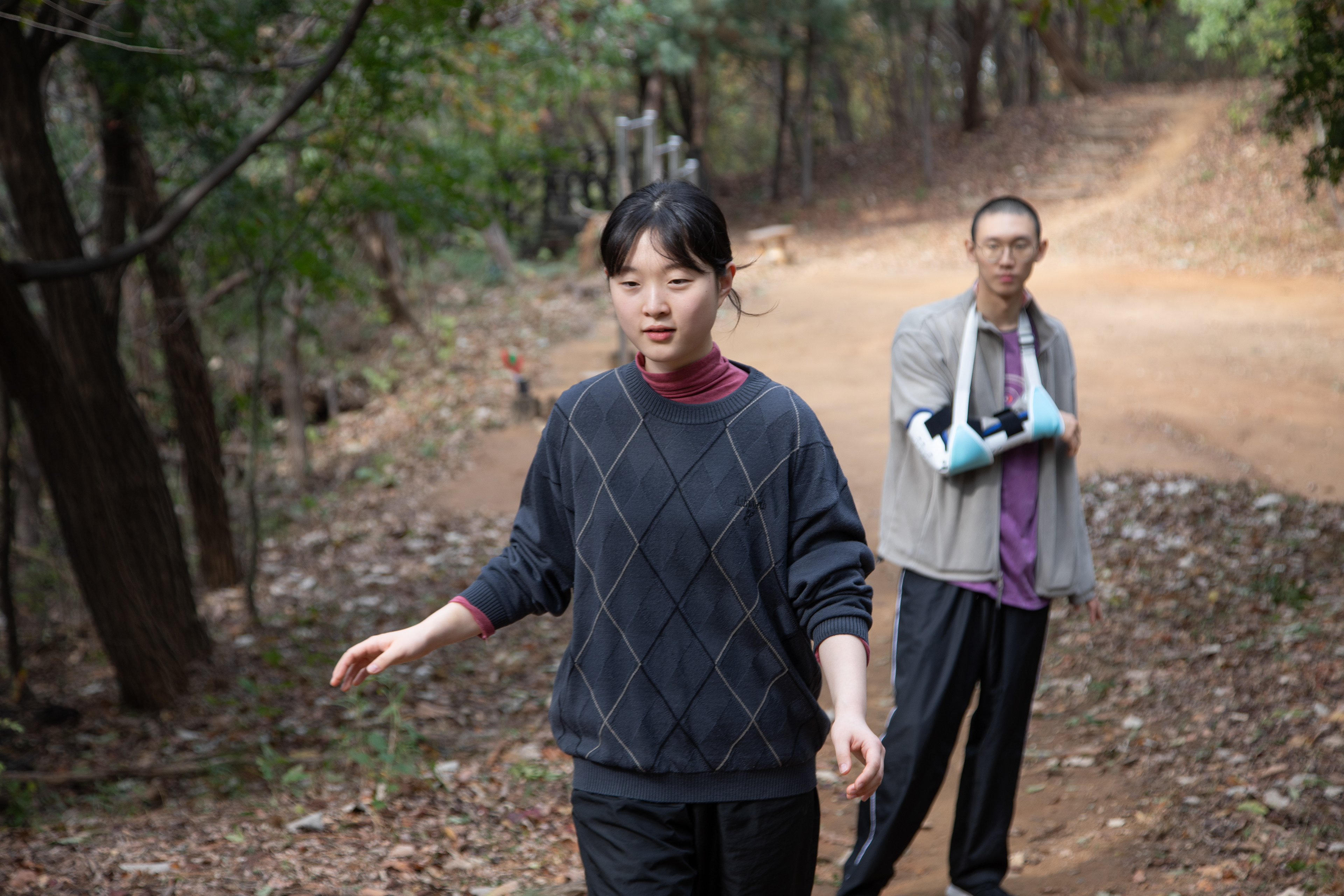
ⓒ Photography: Sukkhun Oh, artists of workshop: Navigating Uncertain Terrain with Generosity (Seoul, Korea)
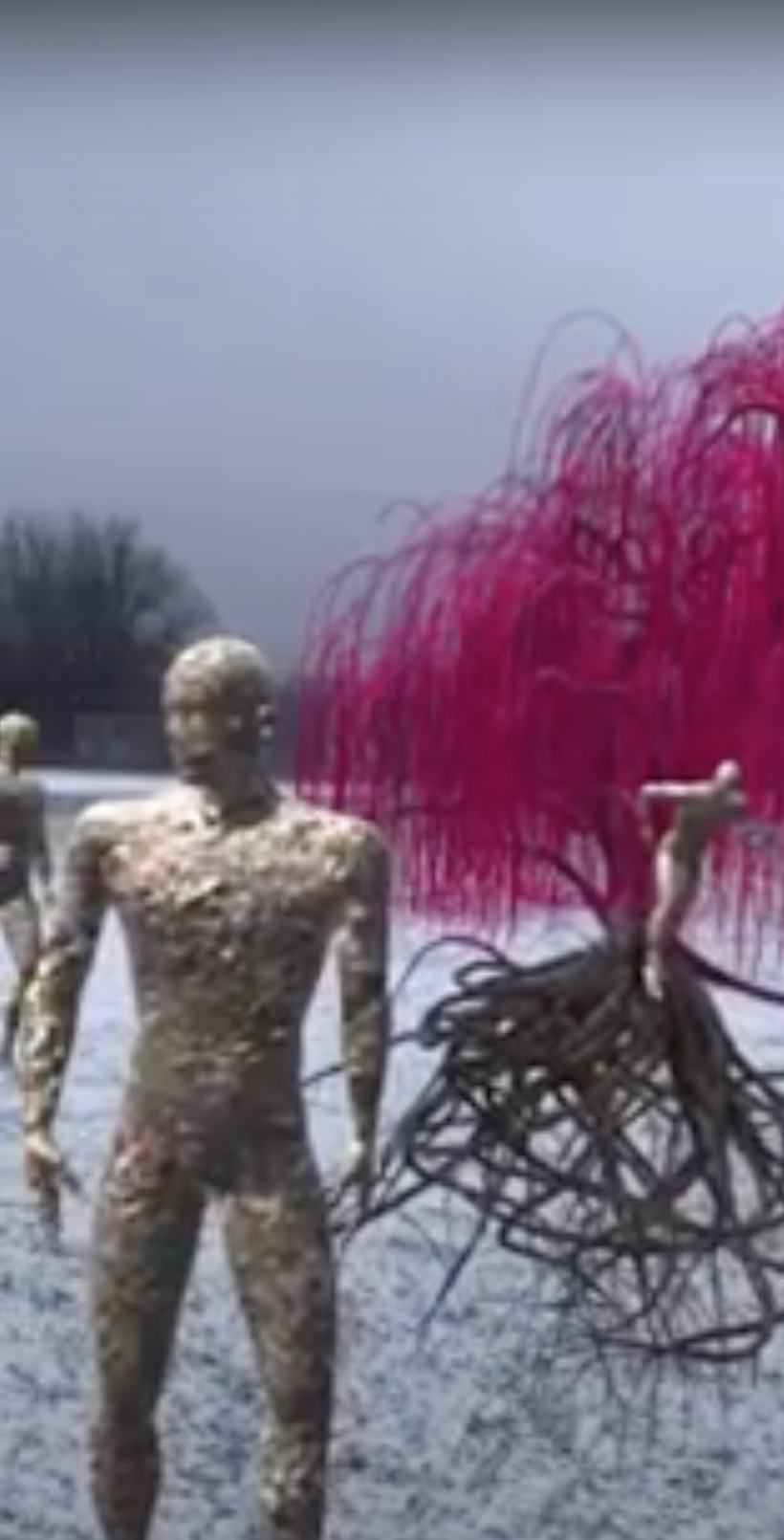
Trinity Bellowood Park, You are swimming here
The two projects are in-between space lab (above, left); there’ll be a mini-doc coming in our next newsletter that literally walks through the process. You are swimming here (v.2). You are swimming here (above right) grew out of a post-show outdoor augmented reality add-on to the performance installation LOT X. Giant versions dancers popped out of windows on the east side of the Power Plant in the Harbourfront Centre complex, beyond the original southern edge of the city. A human-led manipulation of the natural environment; landfill taking the place of the water and wildlife that would have been there otherwise.
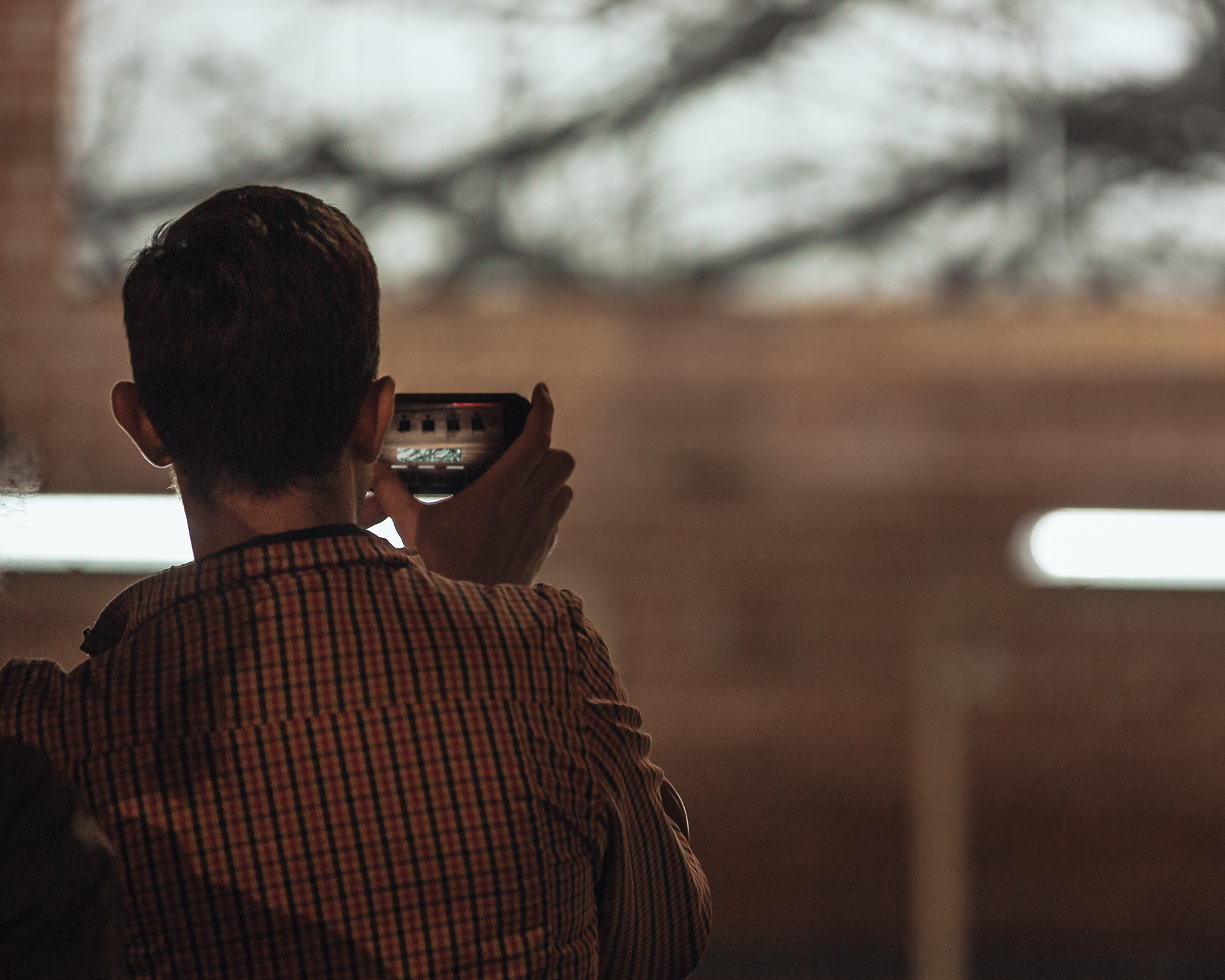
image by Jeremy Mimnagh
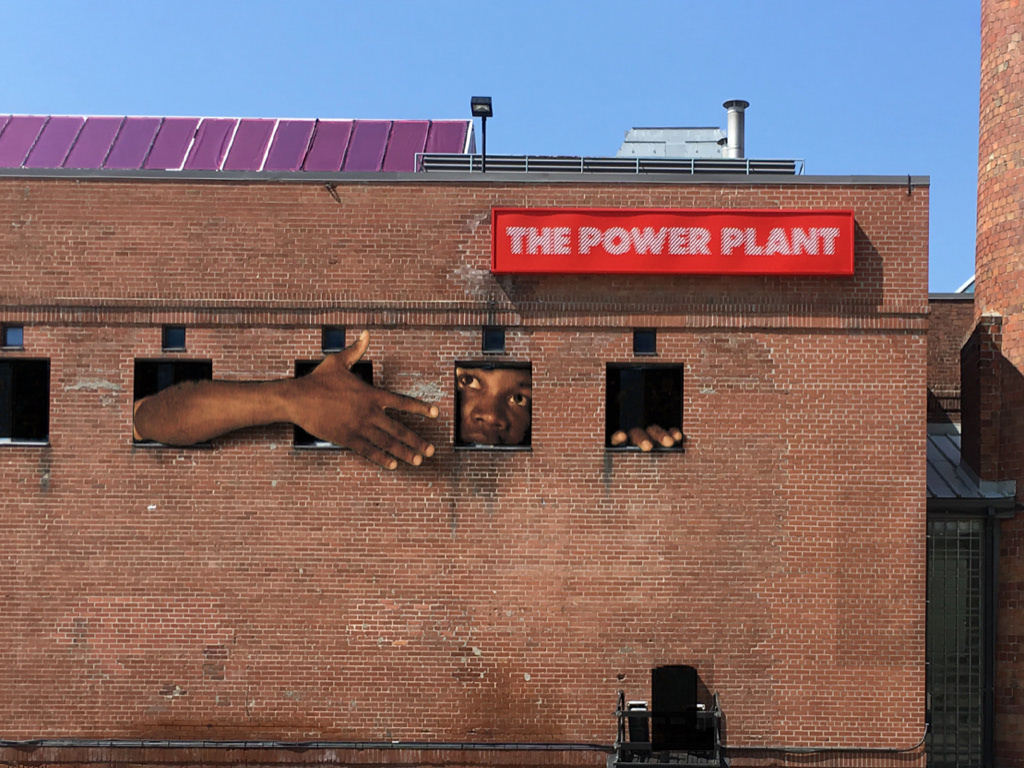
Dancer Pulga Muchochoma in the AR for LOT X
During the pandemic, adelheid was asked what we might make that would draw people to the Harbourfront Site, but not encourage gathering. Luke Garwood, Jeremy Mimnagh and I met along that site multiple times and eventually created a mixed AR experience using some target based-AR like we had on the Power Plant wall during LOT X, as well as AR that used geolocation to situate experience. It was an ambitious project done on a shoestring - a gamble for pandemic times.
Thematically, You are swimming here was a response to the imposing of a different shoreline, a moment to stop and notice what may not be always obvious or known - or in this case - visible to the naked eye. We kept portions of the LOT X choreography in this experience, targeted to adhesive photos on the interlocking brick ground. We had miniature stages made up of oceans, waterlines, etc. Users had to crouch to see the mini dancers. There were skyswimmers floating above, and spheres you could enter to find bee-keeper garbed figures from the future. The project took you on a tour of the grounds between the York Quay and Harbourfront Centres.
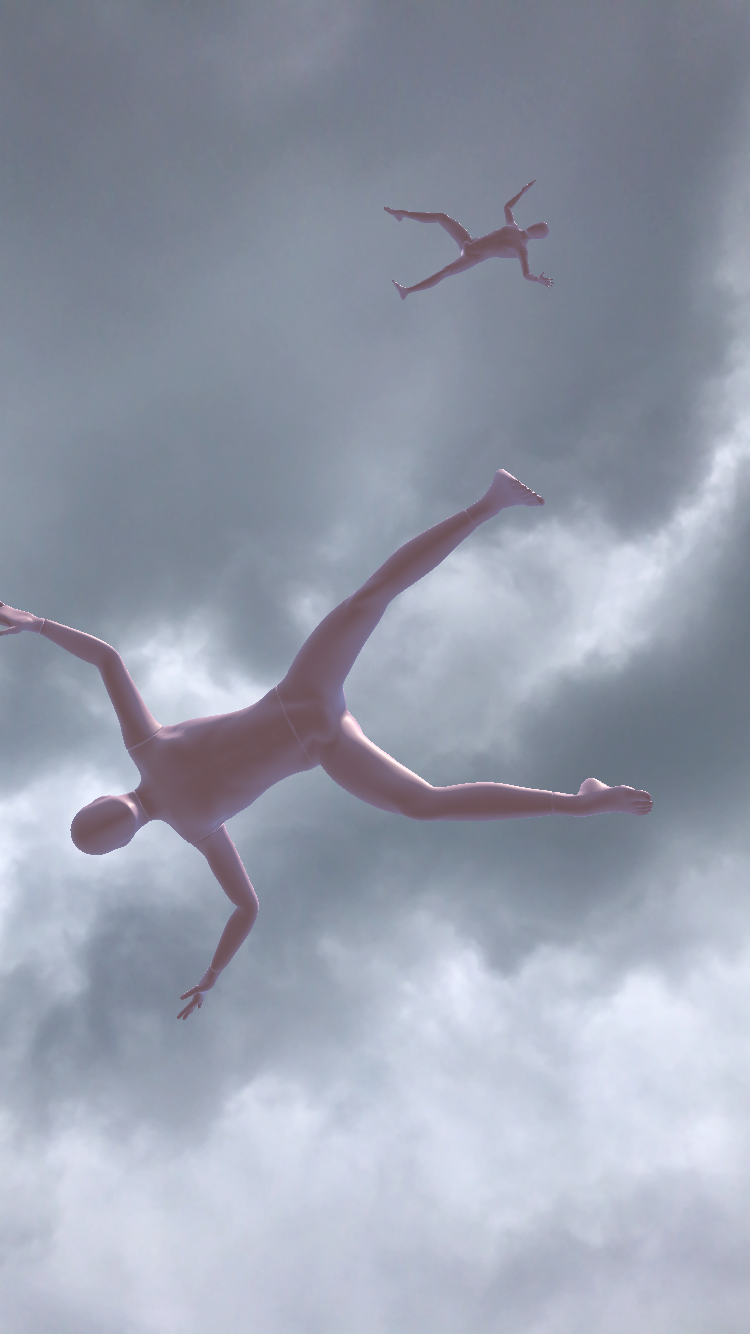
early skyswimmer prototype
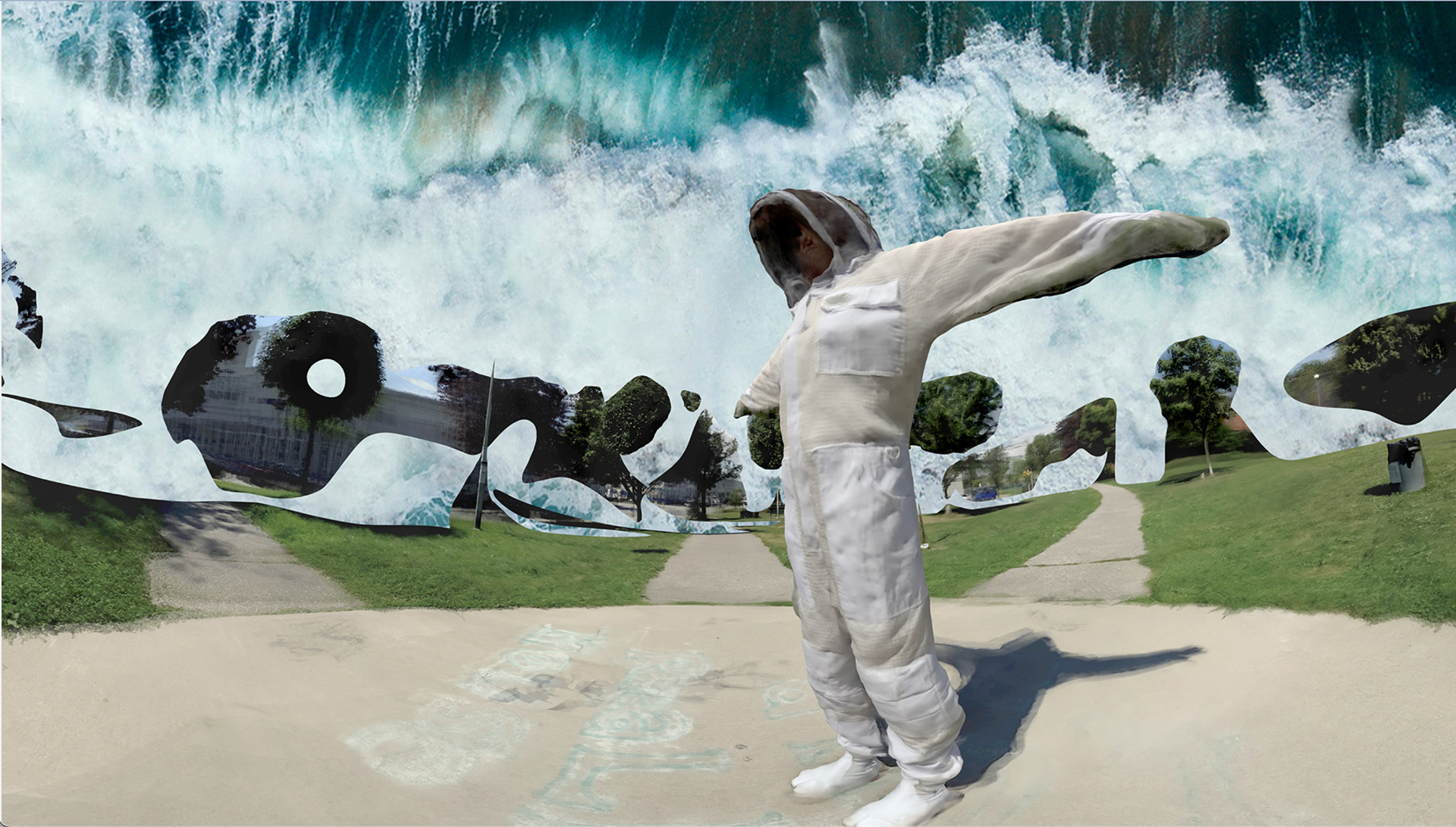
image by Luke Garwood, orignal photos by Jeremy Mimnagh
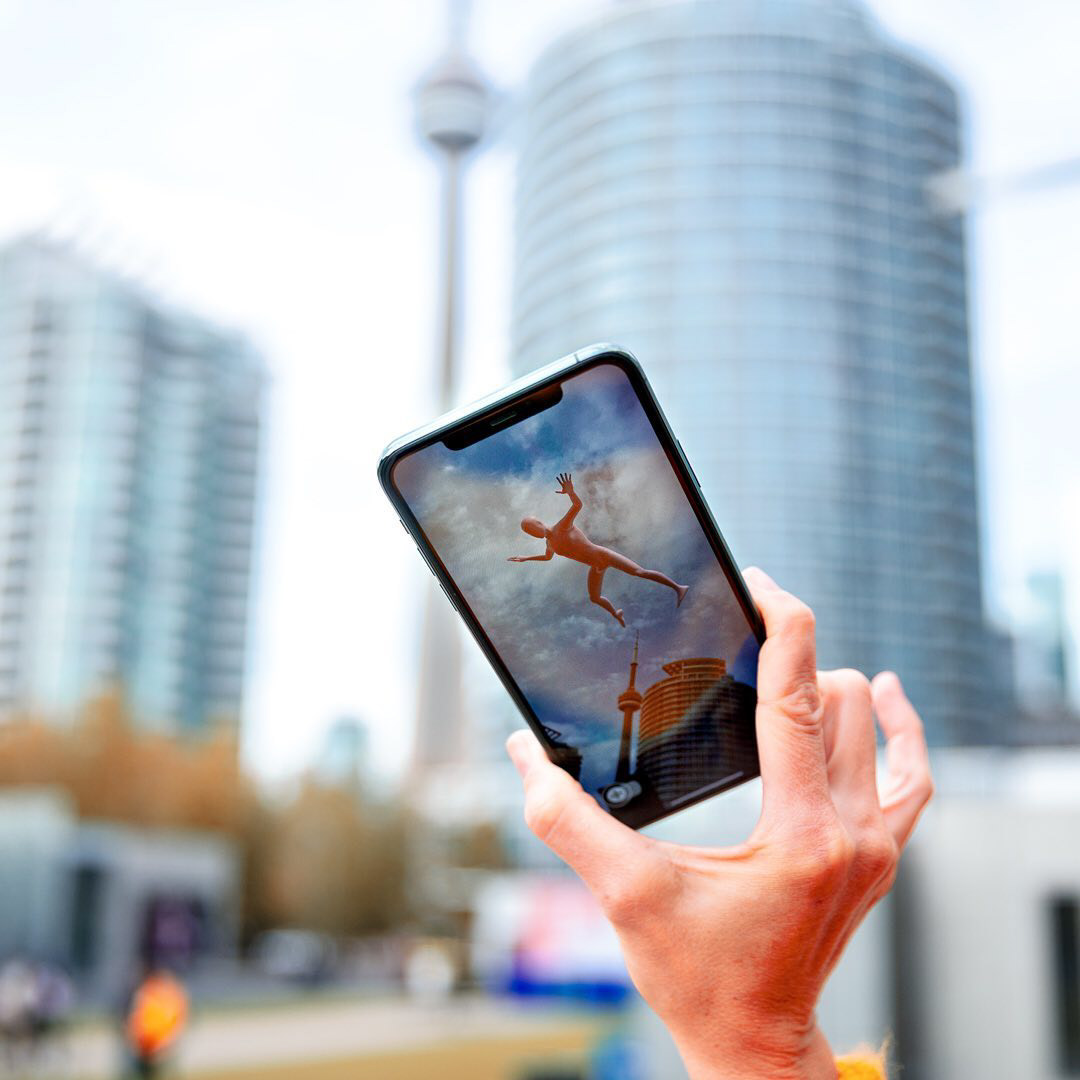
photo by Jeremy MImnagh
If something was missing, it was considering what the purpose of interaction was, not just interacting to get to the next experience, in the perpetual capitalist path of following the right steps that lead to success.
What could AR do that performance couldn’t?
How to make an experience that allows people to be close to themselves, not just uncovering clues to get to the next scene?
How to slow time?
How to make an experience that allows people to be close to themselves, not just uncovering clues to get to the next scene?
How to slow time?
Luke and I agreed early on that the most intriguing scenes of the original involved the 3D objects and avatars. We restructured the idea multiple times and were lucky to work with an incredible team of collaborators in Montreal, Toronto and Vancouver. Like many pandemic projects, the working structure became more and more flexible as time went on, to accommodate health concerns, family responsibilities, unpredictable personal circumstances and shifting work obligations. Time stretched similarly to how it felt during the pandemic. And we endured! We are incredibly grateful for the work and care of all the collaborators who contributed to where the work is now arriving.
The original climate crisis theme is still woven into You are swimming here (v.2) alongside sensitivity to the temporary, interactions that centre you (your attention, your voice), the place of memory, of looking up, of looking back. Sometimes the elements are there, sometimes they disappear.
The experience is for you, alone.
One of the things we all lived through in different ways during the March 2020 - Feb 2022 lockdowns was a sense of being shaken, the realization of how fragile we could be. When I think about You are swimming here, the past and future collide. I think of certain people I lost in that period, but also the importance of remembering what is impossible is sometimes just about perception, and that sometimes, with the right people, in the right time, what at first feels impossible can be very, very, possible.
The unfamiliar familiar. A returning differently. Letting what is being lived enter into the work in its own (maybe subtle) way. A complex journey to arrive, again, in a simple space. To be with the questions that are quietly all around us, every day.
***
If you want to know more about LOT X and the first iteration of You are swimming here, there is a mini-doc you can watch here.
December 16, 2023
[signs of listening]
End of the year, and I'm thinking about what makes things go, who makes things possible, and how important it is to remember all the quiet work that goes on behind the scenes, all the people who are committed to art practice in different ways, supporting work from different angles, who aren’t (and often don’t want to be) in the spotlight, but value performance in ways equal to those practicing and sharing work. The magic of a balanced reciprocal relationship with a producer or manager - everyone eager about the projects they undertake and how to approach (and learn from) interfacing with the public. By sharing the responsibility, excitement, and effort to make ideas live - more is made possible. Leaders who listen, conversation that builds momentum, space to express the needs of the moment…
I was in Ottawa the first week of December guiding an intensive BECAUSE some dance artists in the community there expressed interest wanting to have me come. Yvonne Coutts heard them, sent me an email and asked what I thought. I have been in Ottawa relatively frequently over the last years; I know many of the dancers who studied at the School of Dance. Coutts, the artistic director of Ottawa Dance Directive, and a choreographer (who Darryl Tracy and I commissioned in the early 2000s) invited me to give morning class and in the afternoon, to offer to the community whatever I was inclined to, whatever I was interested in researching. Open-ended.
I was in Ottawa the first week of December guiding an intensive BECAUSE some dance artists in the community there expressed interest wanting to have me come. Yvonne Coutts heard them, sent me an email and asked what I thought. I have been in Ottawa relatively frequently over the last years; I know many of the dancers who studied at the School of Dance. Coutts, the artistic director of Ottawa Dance Directive, and a choreographer (who Darryl Tracy and I commissioned in the early 2000s) invited me to give morning class and in the afternoon, to offer to the community whatever I was inclined to, whatever I was interested in researching. Open-ended.
Class was packed. The accompanist was amazing (on one day we had two). We created a performance structure in 13hrs and shared it on the last day. It was one of the most refreshing, energizing experiences I’ve had in a while. Simple: a time to expose questions, explore movement and ways of thinking about the body and presence - and listening.
Listening – something that not just SIRI does well, but people who are attuned to their context, wherever they are – at a desk, in a studio, in an outdoor performance, in a car, in a hallway, elevator, marketplace, subway, dr.’s office…and even more special those people who apply listening to consequential action. That’s its own practice.
End of year thank you to all those people who are listening, or practicing listening.
The image above was taken by me in the entranceway to the administrative offices of the National Theatre in Taipei. It’s not a great picture. But it is a phrase I would love to see more – to remember it is a miracle that things happen, very often without the resources needed, but thanks to the generosity of amazing people who often go beyond to make things happen.
Listening – something that not just SIRI does well, but people who are attuned to their context, wherever they are – at a desk, in a studio, in an outdoor performance, in a car, in a hallway, elevator, marketplace, subway, dr.’s office…and even more special those people who apply listening to consequential action. That’s its own practice.
End of year thank you to all those people who are listening, or practicing listening.
The image above was taken by me in the entranceway to the administrative offices of the National Theatre in Taipei. It’s not a great picture. But it is a phrase I would love to see more – to remember it is a miracle that things happen, very often without the resources needed, but thanks to the generosity of amazing people who often go beyond to make things happen.
***
Photo by Marie France Forcier at the Oil Tank Culture Park in Seoul (Korea) on a site visit as we looked for locations for the experience we are creating with in-between space lab.
November 15, 2023
[on reflection]
After three weeks in Asia, two in a Taiwanese cultural exchange and one in a practice and creation residency in Seoul, I could fill this reflection with thoughts on teaching abroad (and translation) or performing in a space that left no margin for error, or create a photos collage of suspended moments, or stories of people who have left a lasting impact. Instead of reflecting on these strong reference points which are as (in)concrete as a memory can be, I want to focus in on the actual process of reflection – and how individual a process it is.
Reflection came naturally to me in my 20s and as opportunities, work, and commitments increased, it became harder to intentionally carve out time for more than recognizing what had happened and preparing for what was to happen next. The best time for any kind of thinking has ironically been in transit – driving or cycling or sitting on a train watching the world whiz by – my body going somewhere as my mind stilled to look back.
In the in-between space lab, these ideas converge in a practice that allows me to see where I am/was slowly, moving uncertainly into space I must enter with care, listening without habitual tools that allow me to pass more and more quickly through my existence. Walking backward. Experiencing what I can’t see coming. Opening up perspective. Trusting myself. Redefining a relationship with time.
I’m writing this at 5 in the morning, it’s dark outside, and the sound of silence allows me to hear each keystroke on the laptop. I feel the space around me. In this moment, obligations, the pressure of deadlines, expectations, the cost of living, and matters of health, family, and life, are also suspended. This is like the moment on stage alone when something else can take over.
This pocket of time is probably thanks to my body being in between time zones - one benefit of overseas travel, of the aftermath of passing between locations of experience. Post-drift, a catching up with yourself. That is reflection – not just looking back, but meeting up with yourself in your future. So here is a gathering of thoughts, discoveries, recurrent realizations, or confirmations, that came from these last weeks in Taichung, Taitung, Kaohsiung, Chiayi, Taipei, Seoul, and all the airports, roads, and passageways in between.
Movement is the physical process of contemplation.
Feeling can be knowing. Much of the time you can’t really know but must read the moment with the tools you have. You must trust those tools.
Synchronicities happen when you are not searching.
When someone needs to hold your hands, you let them do it as long as they need.
Sometimes you can only experience what you want to experience, but sometimes you do experience what you need to in a particular moment.
There is a natural drift that happens. Let it.
Feeling pressure may increase resolve or drive; it may also blur reason, and sensitivity, and undermine listening*
The impossibility of predicting when/if things will make sense. Being there when they do.
I keep thinking about how to create space and/in work that doesn’t take for granted our differences but makes space for each person – where they are and with what they bring. How to make without perpetuating binary thinking, instead where success and failure always co-exist dependent on perspective, a space where complexity lives, where there is the possibility to stretch and hold time enough to share experiences that will only ever make sense later.
*the use of listening isn’t related to hearing, but to how, through all senses, we give/pay attention to ourselves and the world we exist within.
Reflection came naturally to me in my 20s and as opportunities, work, and commitments increased, it became harder to intentionally carve out time for more than recognizing what had happened and preparing for what was to happen next. The best time for any kind of thinking has ironically been in transit – driving or cycling or sitting on a train watching the world whiz by – my body going somewhere as my mind stilled to look back.
In the in-between space lab, these ideas converge in a practice that allows me to see where I am/was slowly, moving uncertainly into space I must enter with care, listening without habitual tools that allow me to pass more and more quickly through my existence. Walking backward. Experiencing what I can’t see coming. Opening up perspective. Trusting myself. Redefining a relationship with time.
I’m writing this at 5 in the morning, it’s dark outside, and the sound of silence allows me to hear each keystroke on the laptop. I feel the space around me. In this moment, obligations, the pressure of deadlines, expectations, the cost of living, and matters of health, family, and life, are also suspended. This is like the moment on stage alone when something else can take over.
This pocket of time is probably thanks to my body being in between time zones - one benefit of overseas travel, of the aftermath of passing between locations of experience. Post-drift, a catching up with yourself. That is reflection – not just looking back, but meeting up with yourself in your future. So here is a gathering of thoughts, discoveries, recurrent realizations, or confirmations, that came from these last weeks in Taichung, Taitung, Kaohsiung, Chiayi, Taipei, Seoul, and all the airports, roads, and passageways in between.
Movement is the physical process of contemplation.
Feeling can be knowing. Much of the time you can’t really know but must read the moment with the tools you have. You must trust those tools.
Synchronicities happen when you are not searching.
When someone needs to hold your hands, you let them do it as long as they need.
Sometimes you can only experience what you want to experience, but sometimes you do experience what you need to in a particular moment.
There is a natural drift that happens. Let it.
Feeling pressure may increase resolve or drive; it may also blur reason, and sensitivity, and undermine listening*
The impossibility of predicting when/if things will make sense. Being there when they do.
I keep thinking about how to create space and/in work that doesn’t take for granted our differences but makes space for each person – where they are and with what they bring. How to make without perpetuating binary thinking, instead where success and failure always co-exist dependent on perspective, a space where complexity lives, where there is the possibility to stretch and hold time enough to share experiences that will only ever make sense later.
*the use of listening isn’t related to hearing, but to how, through all senses, we give/pay attention to ourselves and the world we exist within.
***
October 18, 2023
This page is dedicated to all things being in progress. It is being implemented not only to connect and share more with you who is inclined to read but also to keep me accountable to research and reflection, to keeping art practice and making at the heart of adelheid.
Over the last year, adelheid did a company revisioning with a thought to what might be ahead in the sector, and I completed an MFA in practice-based research. Maybe not unsurprisingly, I ended up where I began, wanting adelheid to be a home for process, interaction, collaboration/exchange (now local and international) and building experiences that might shift individual or collective ways of thinking. Our work has some complexity and I hope that means that you can take it at face value or go deeper to find more. adelheid needs to offer the possibility of growth for all those who engage with it, including me.
I’m uncertain what this page will contain in the future but for now I'm starting off with a bit of writing toward the presentation of the solo between me and you at FIBA in 2024:
As a female choreographer, my interest in creating performance work has grown through an interest in understanding, and sharing understandings of, human behaviour – what influences it, how it shifts, and what happens through stress or celebration. It is the constant balancing of mind and body that sustains my curiosity as a creator and performer. Observing and interacting with people, deciphering how perception is influenced by environment, perspective, and context is particularly important in this moment of social reckoning, and as we move through pandemic recovery addressing neurodiversity and mental health not only within creation practice but within the subject matter of work being made. Caring for the well-being of those who interact with a performance, from collaborator/performer to audience member, sets up an experience that can open us to learning more about ourselves. I make performance that deeply considers the experience of audiences; the solo work between me and you does this through engaging in dialogue that exposes vulnerabilities while also requiring assistance from the audience. How we can be better responsible for each other, how we listen, and how we create community and relationship are all fundamental aspects of the kind of interactive, ambulatory and immersive work I make. I believe that the exercise of being gathered together temporarily to witness or participate in performance can be a social experiment, a site for learning, and a powerful opportunity to allow for healing and repair – independently and collectively.
Thanks for being here with me. Over and out.
***
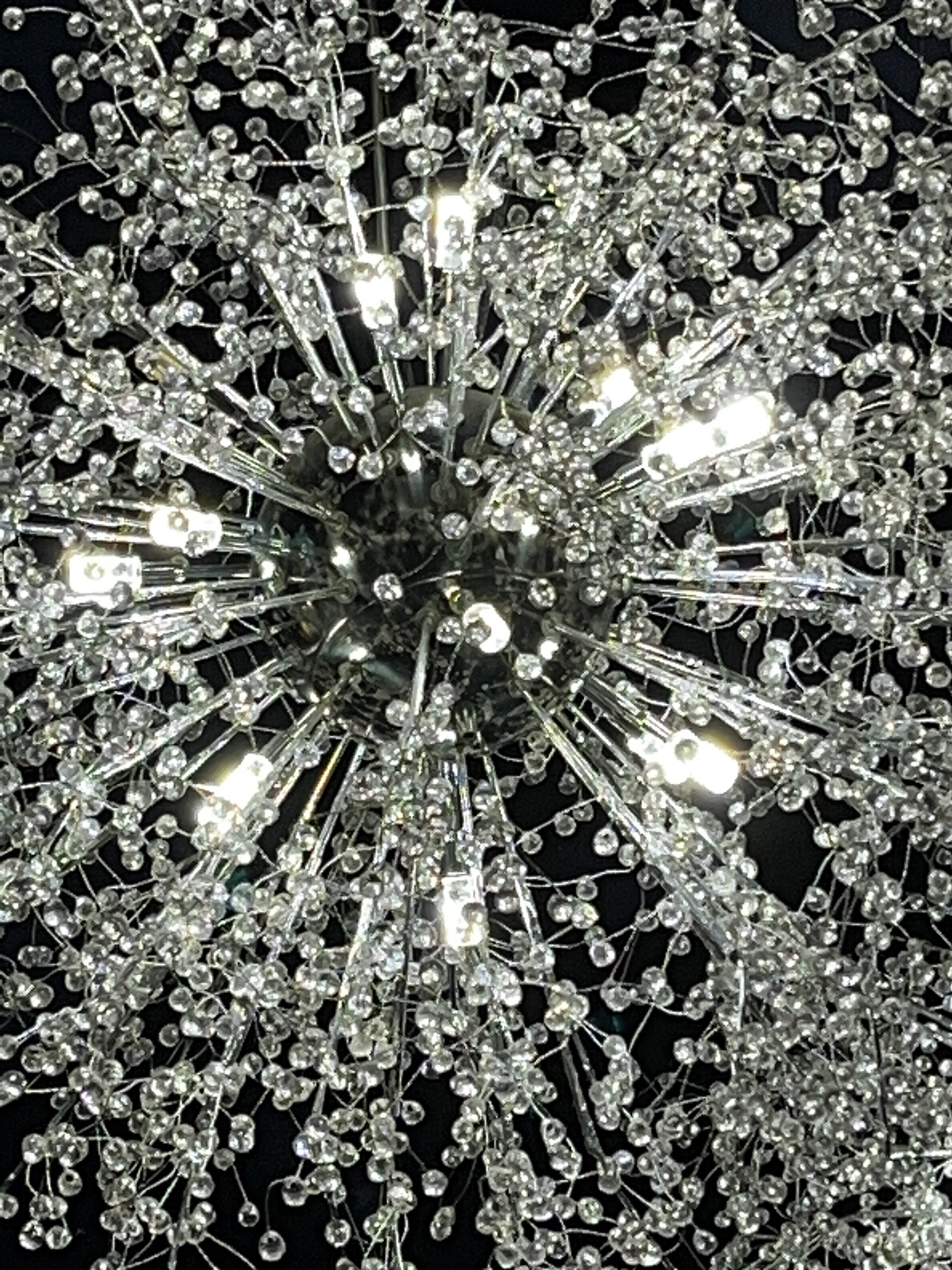
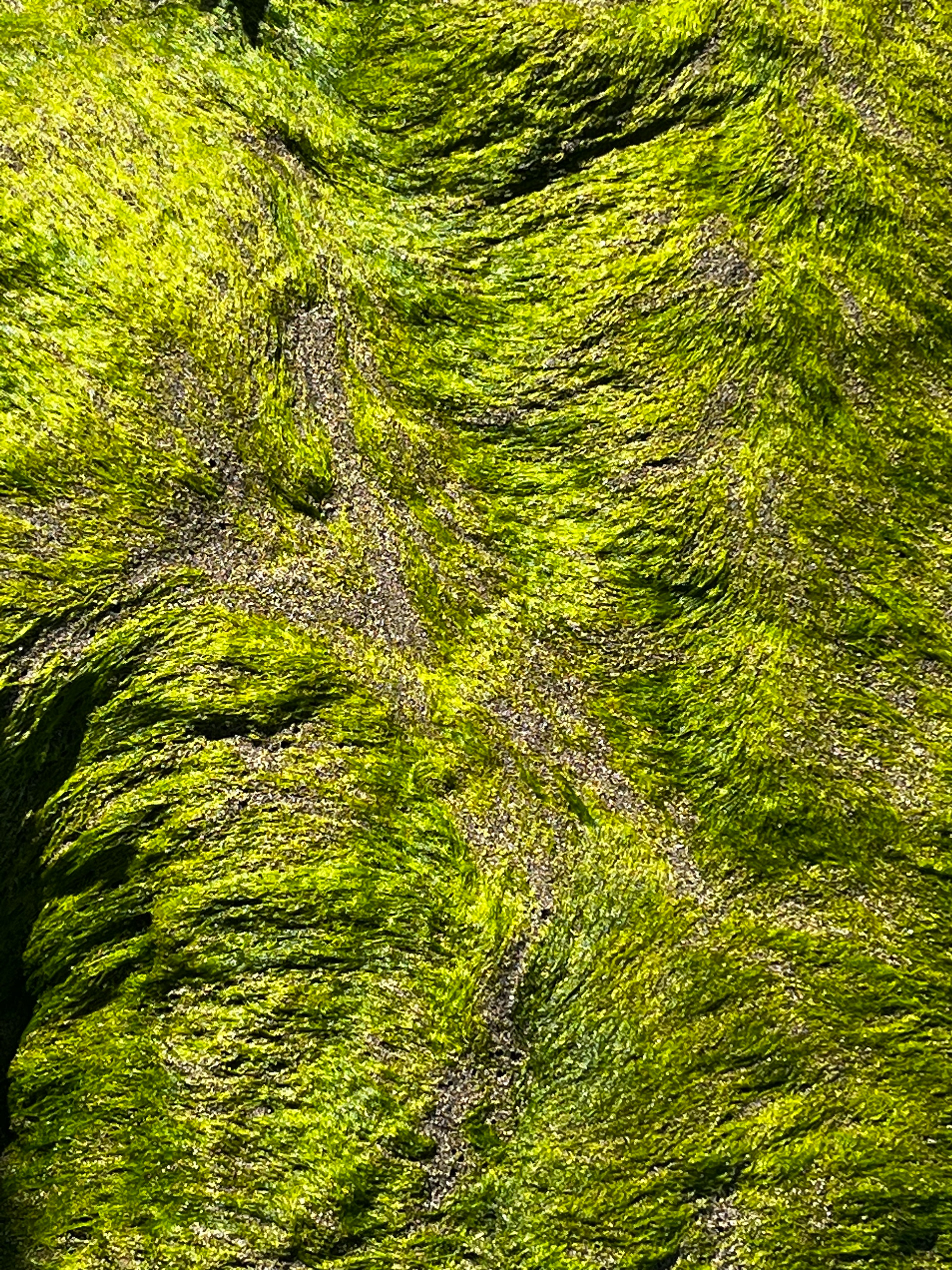
***
***
